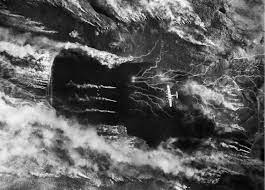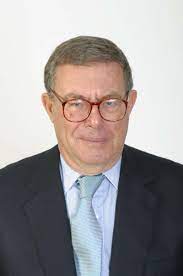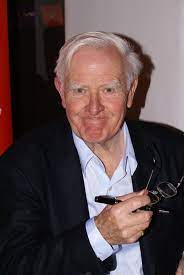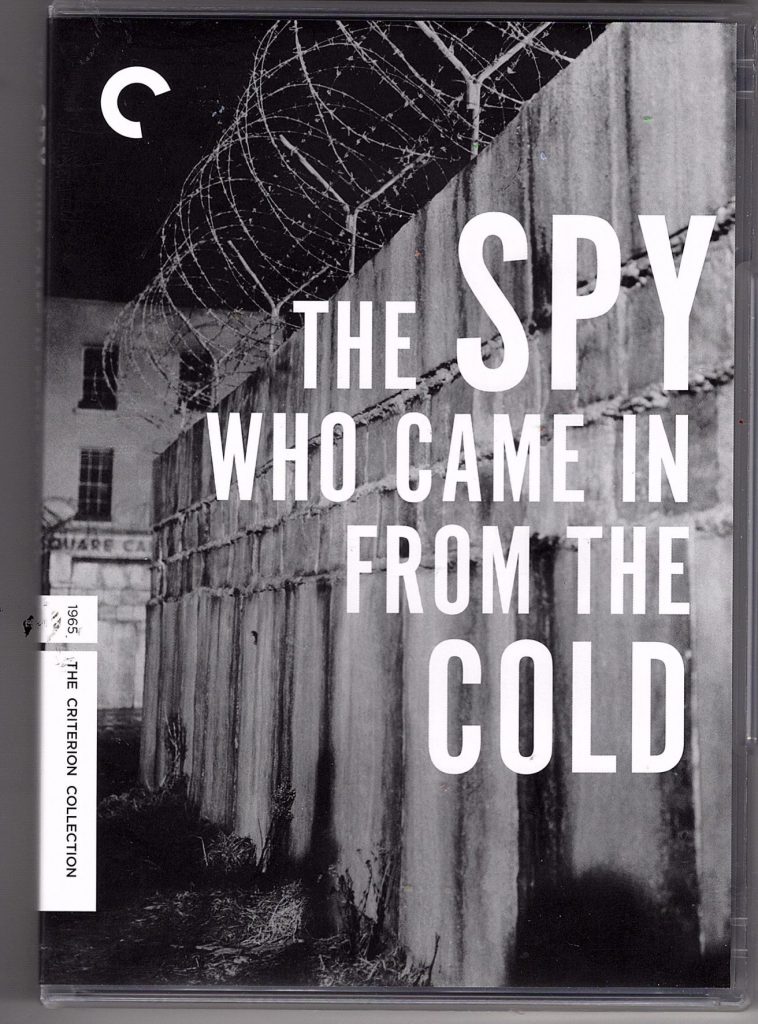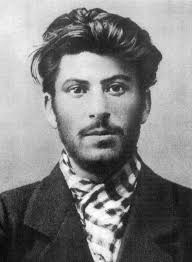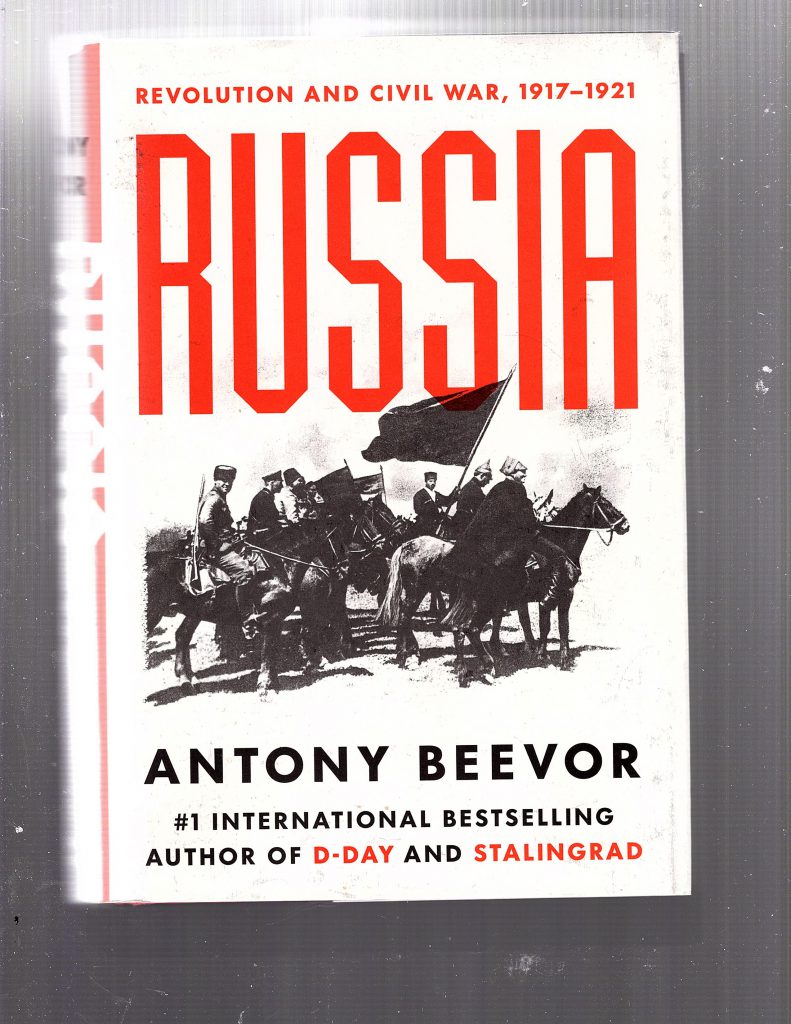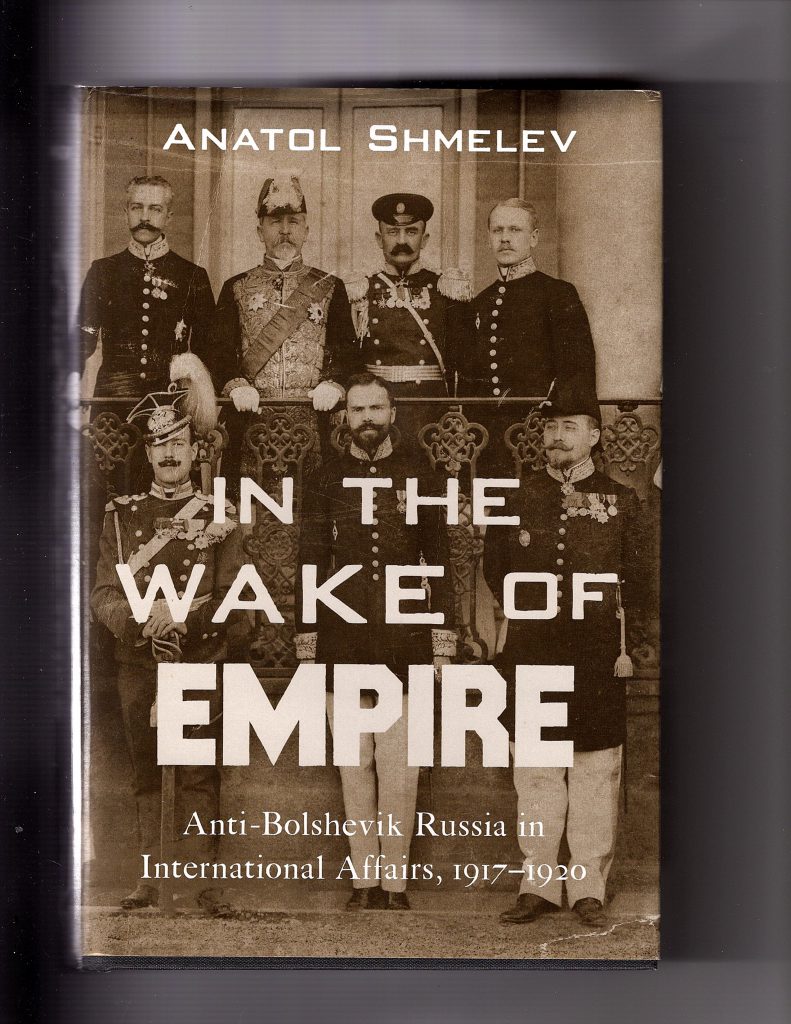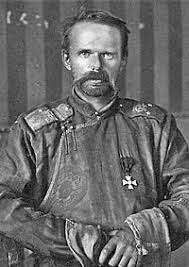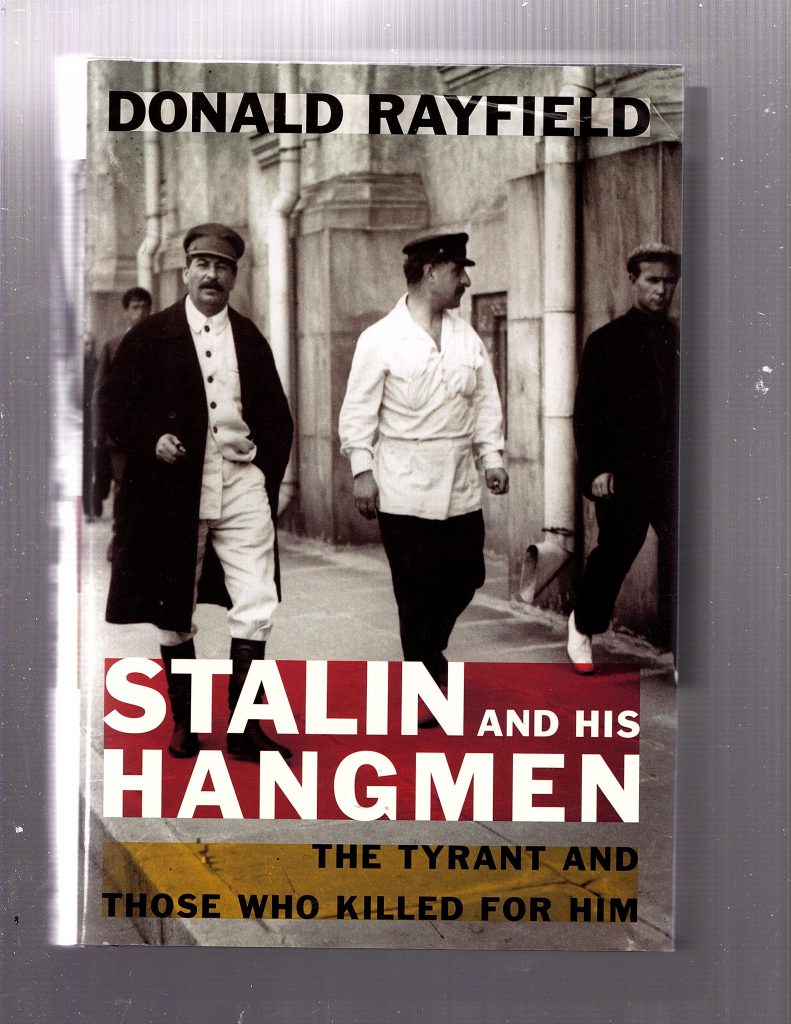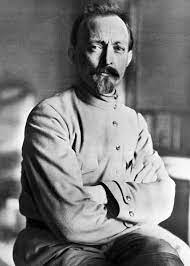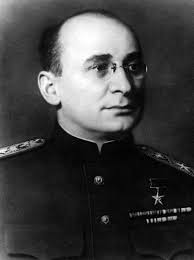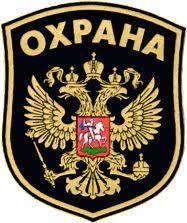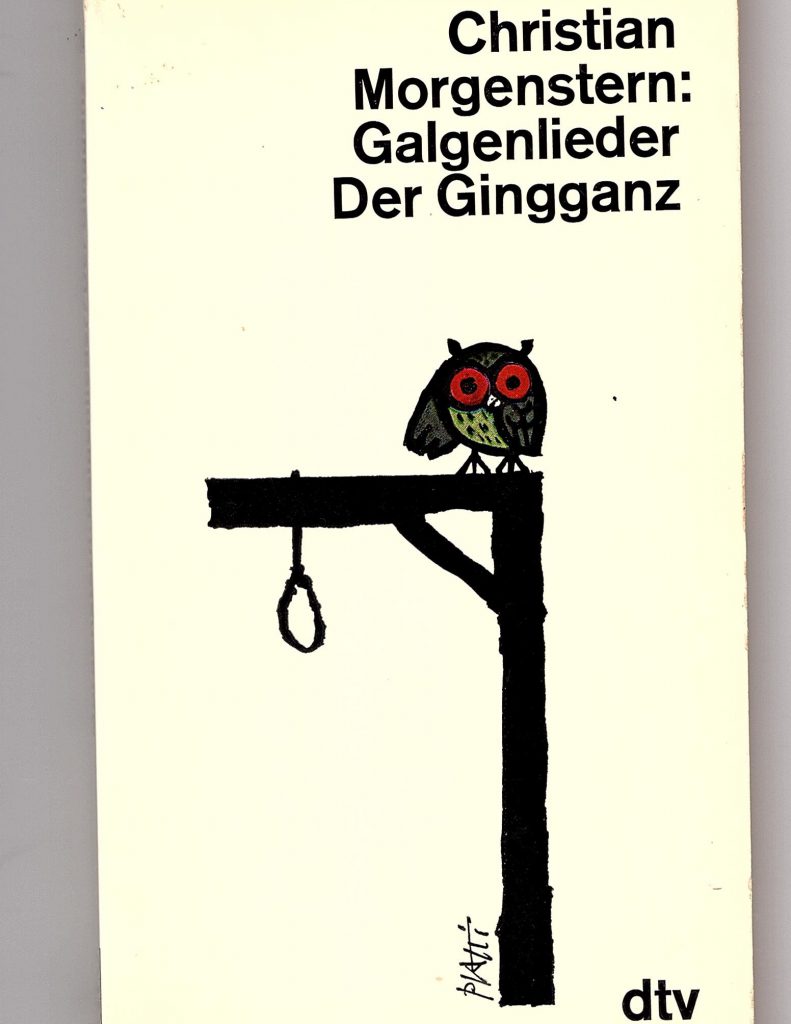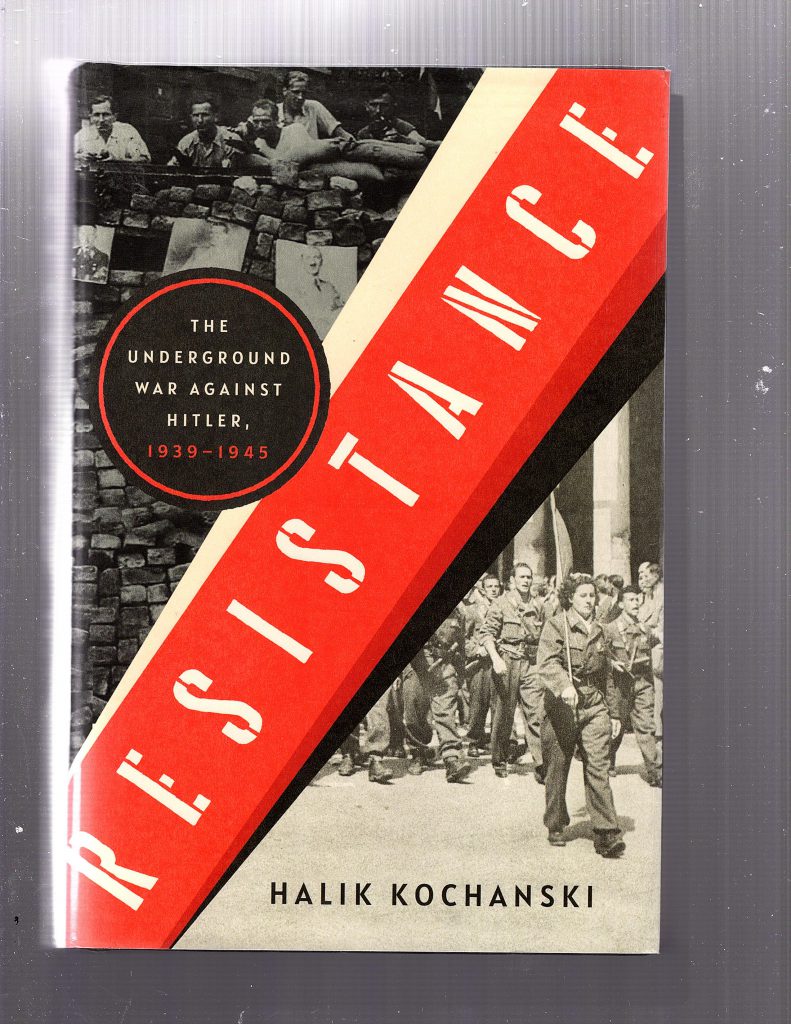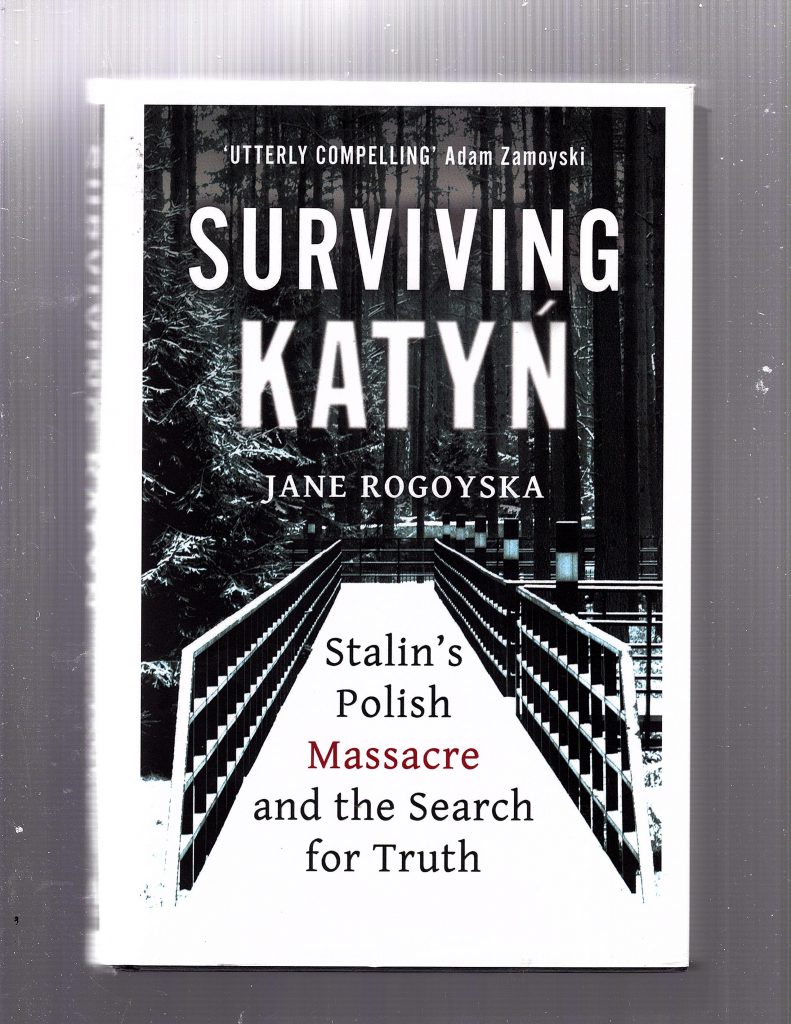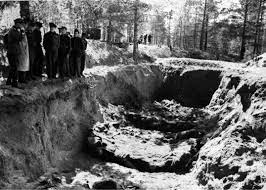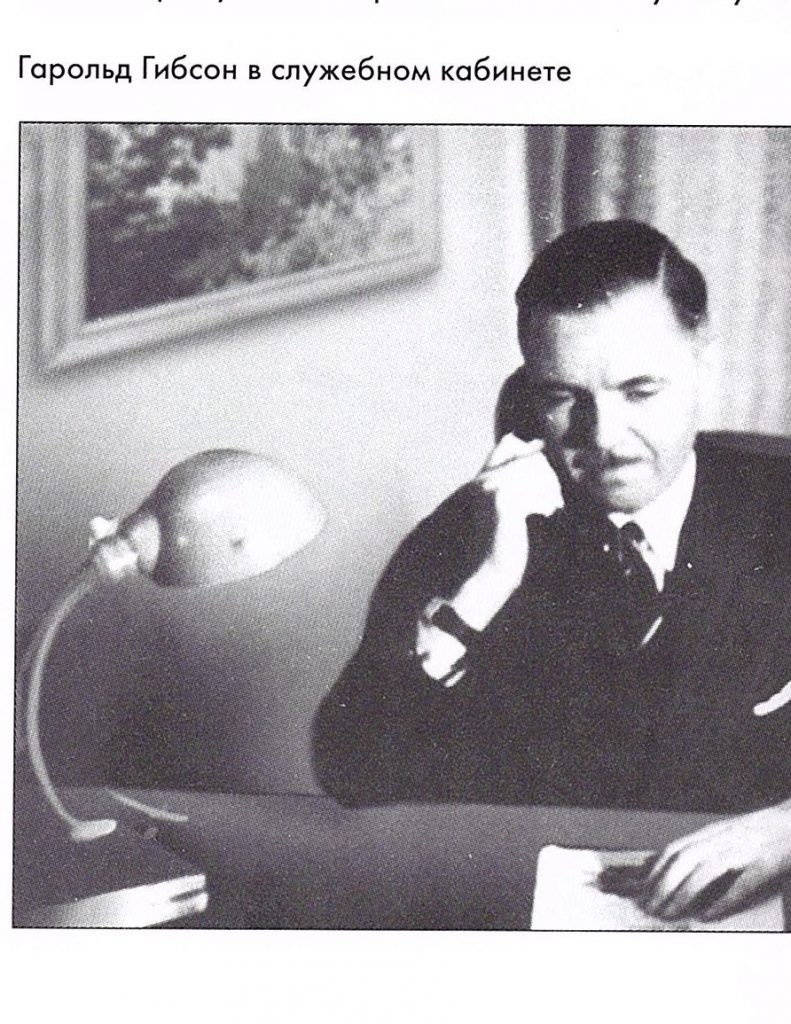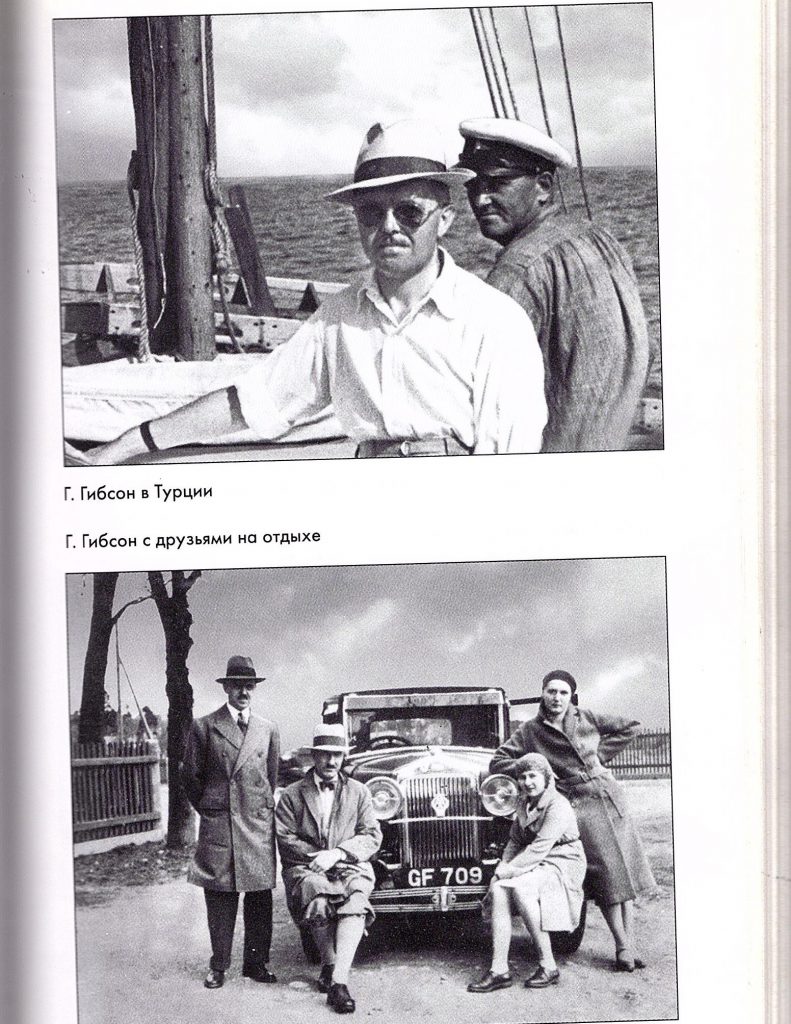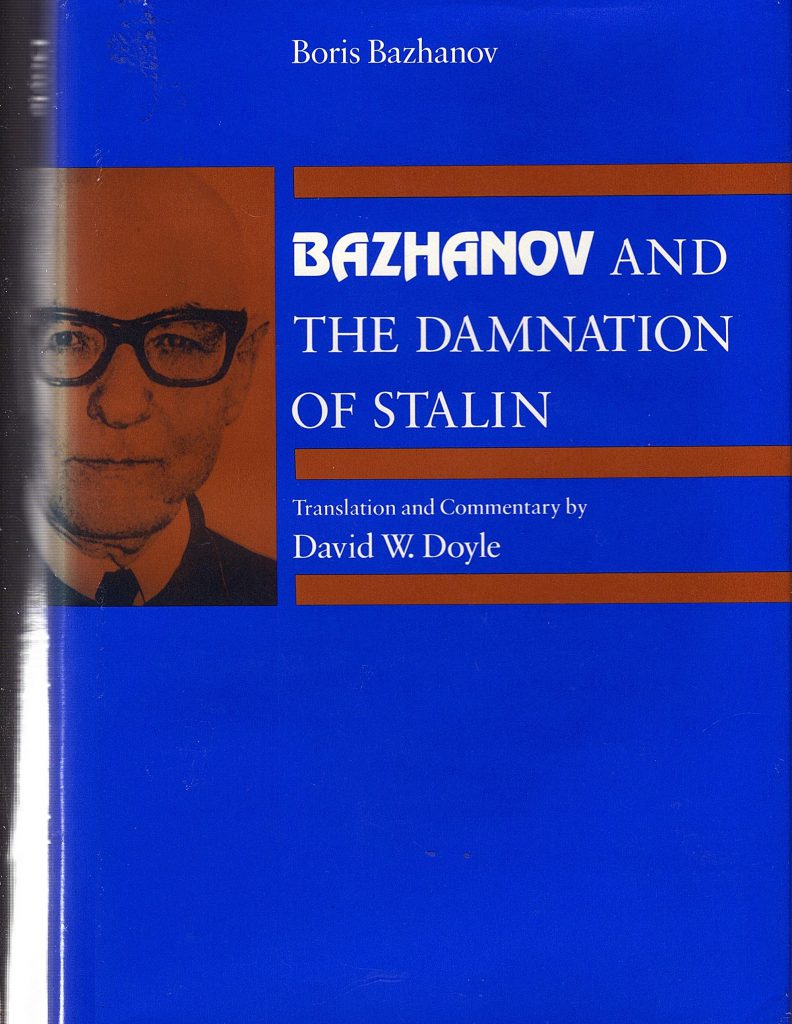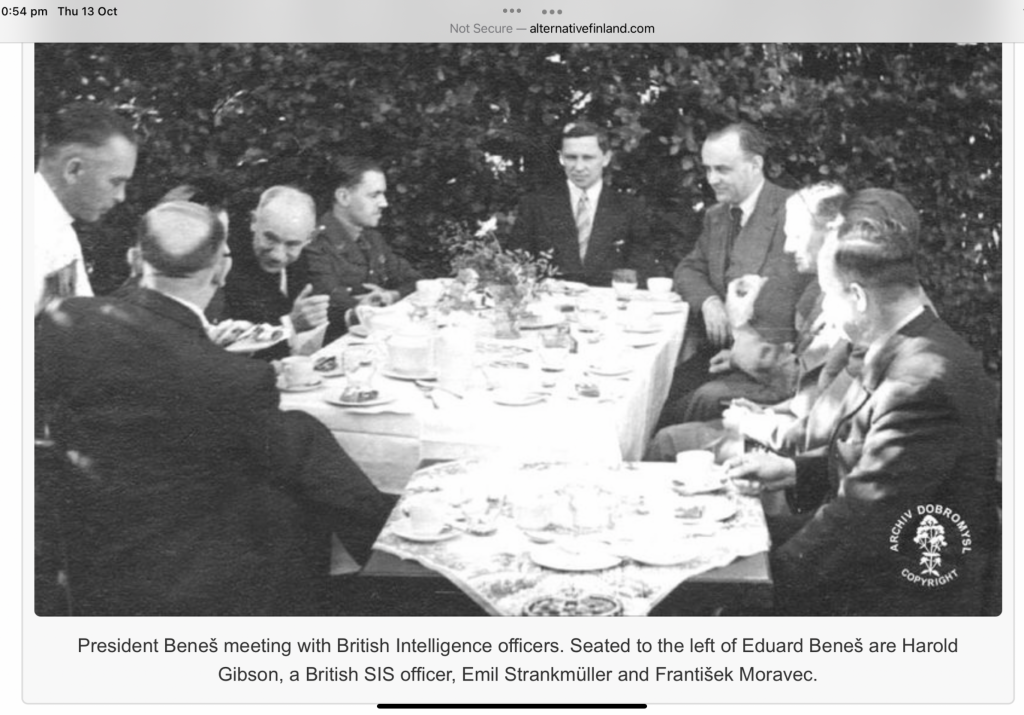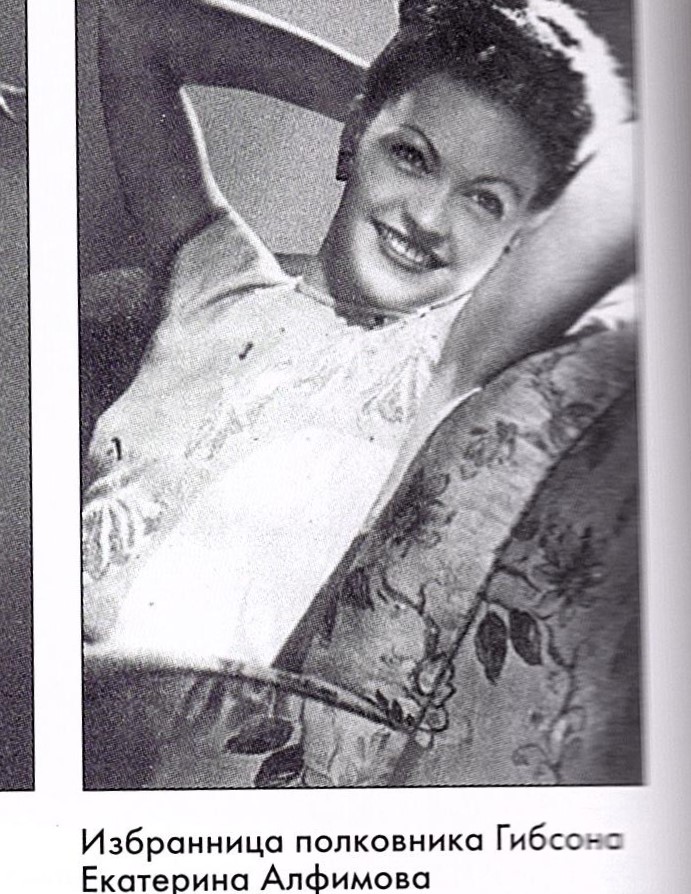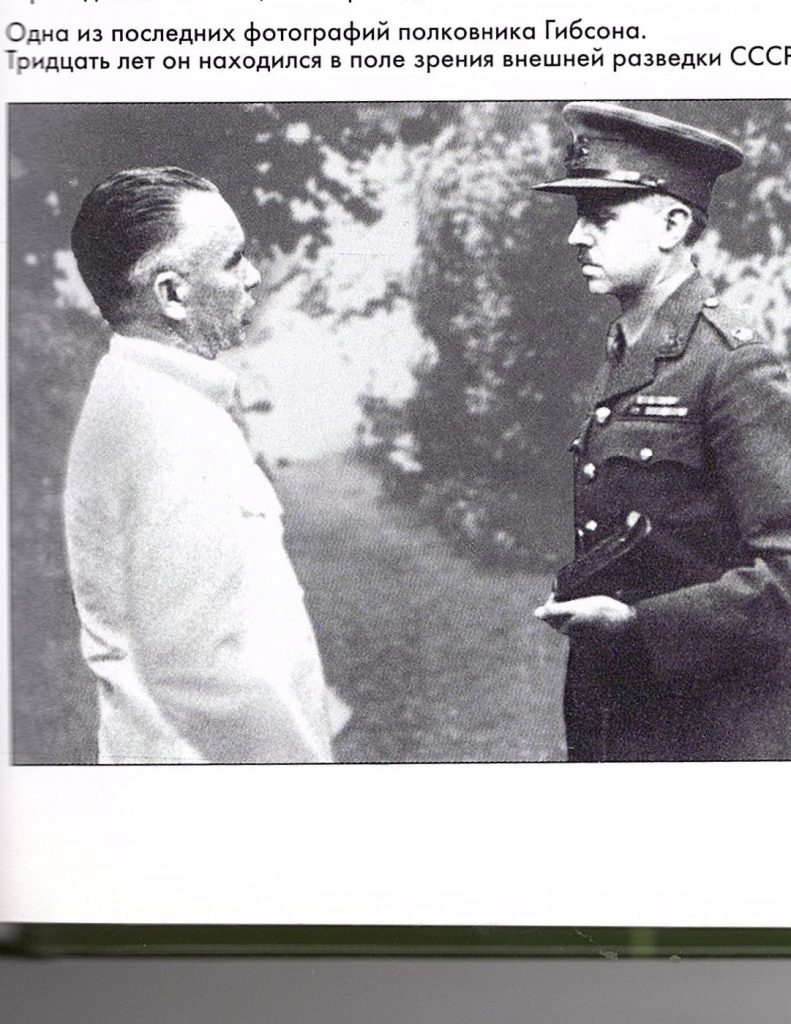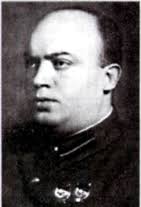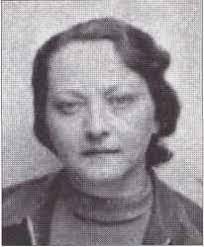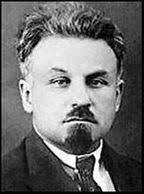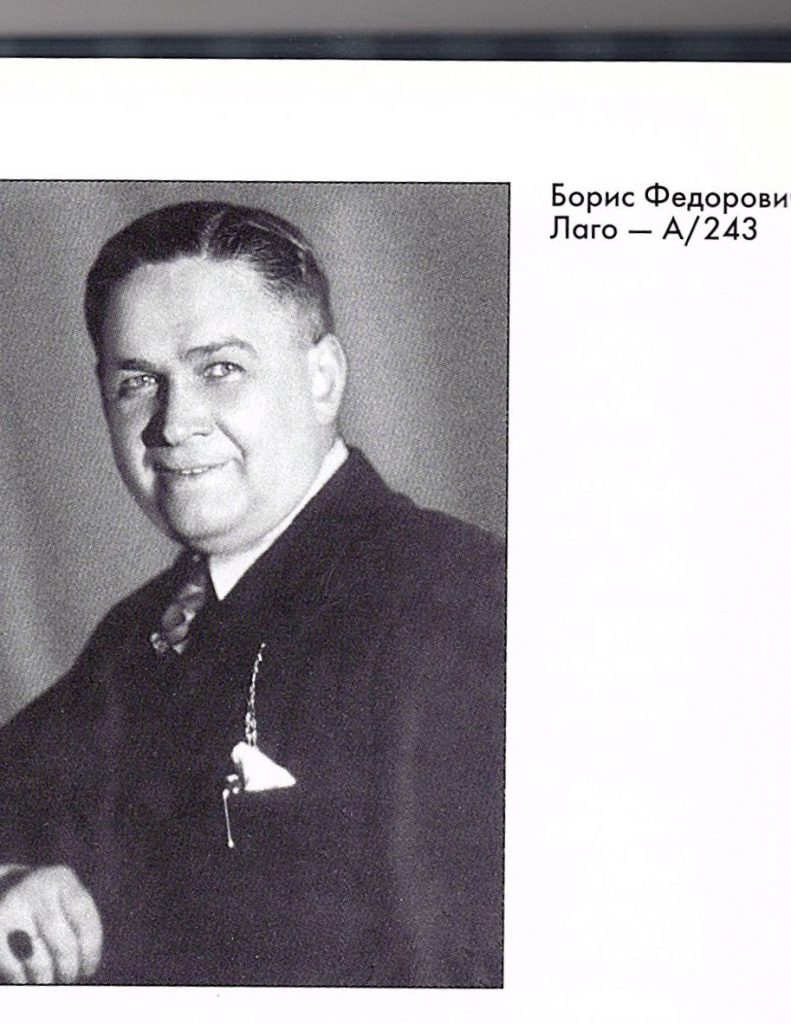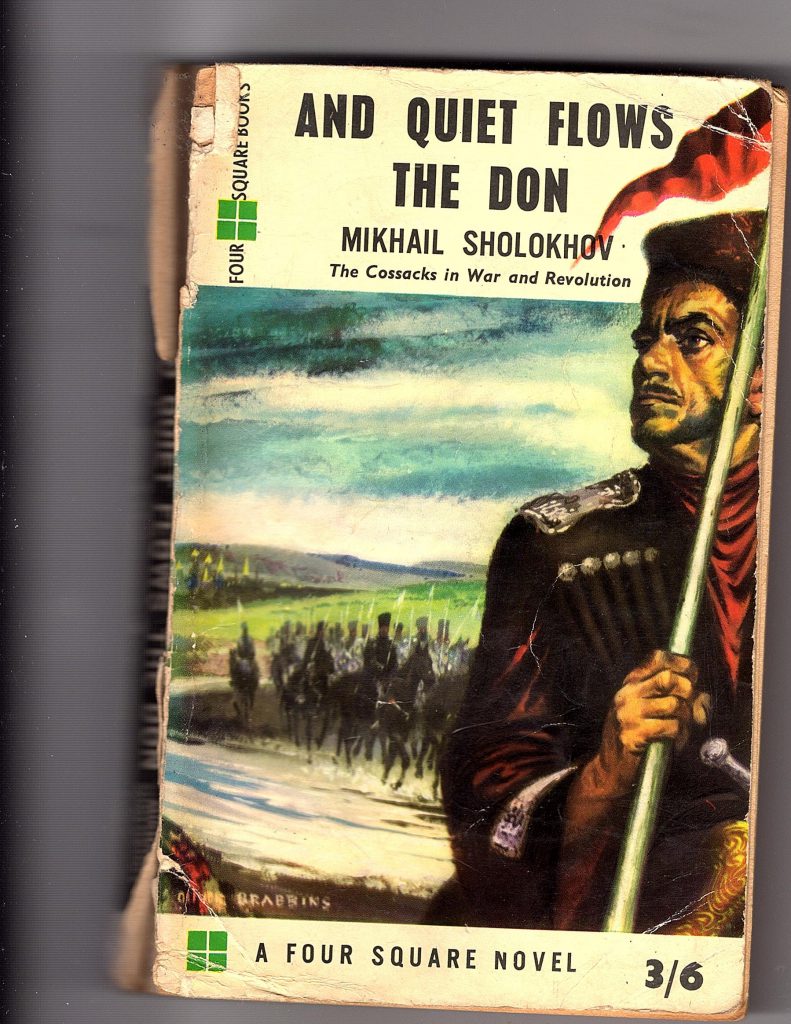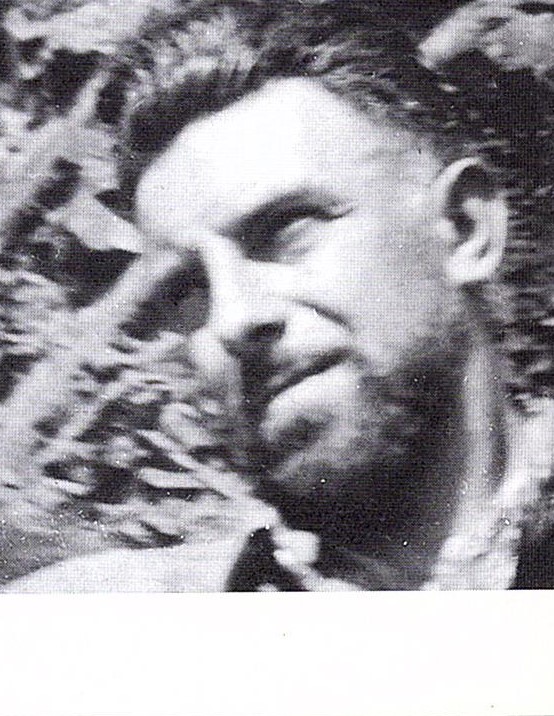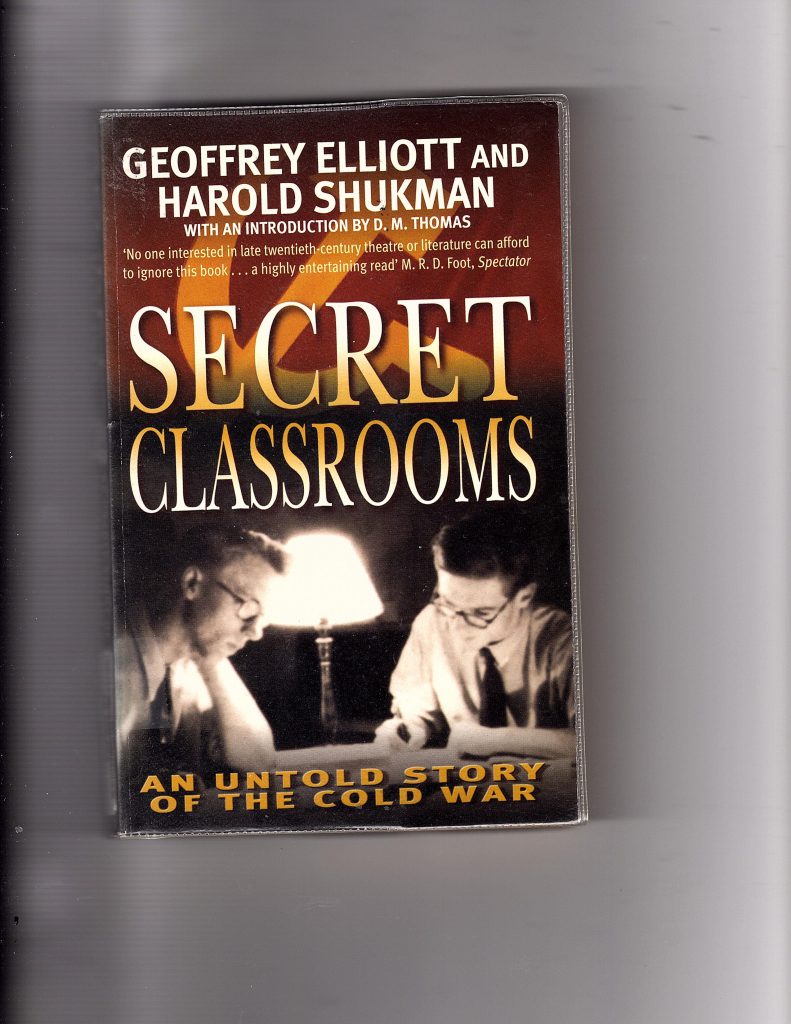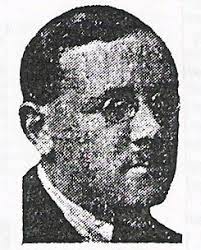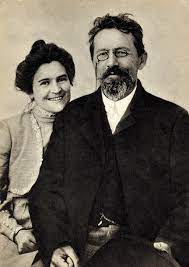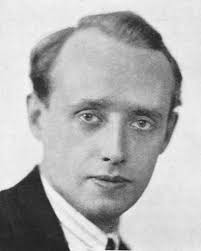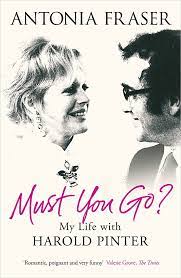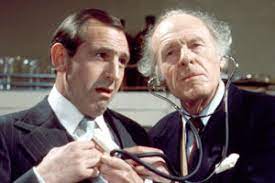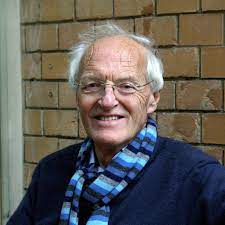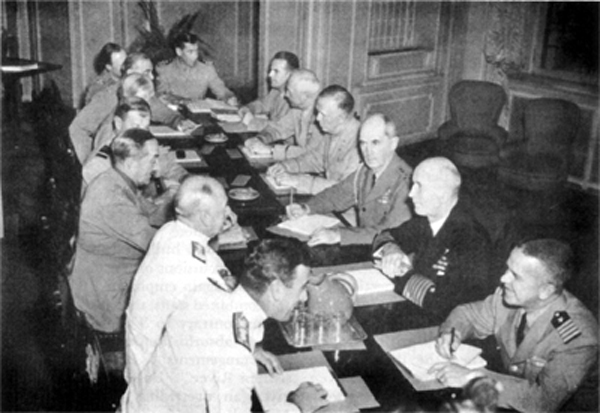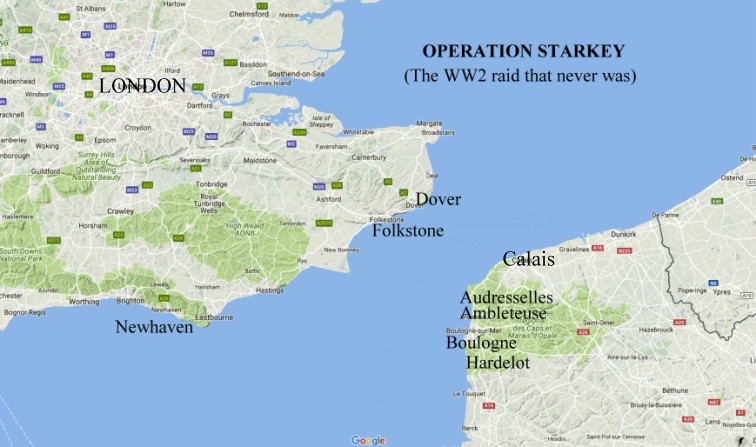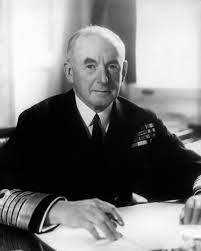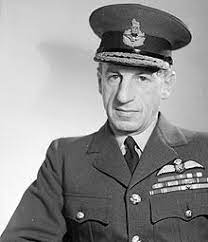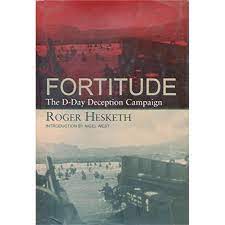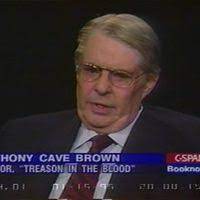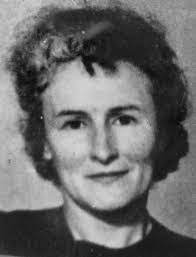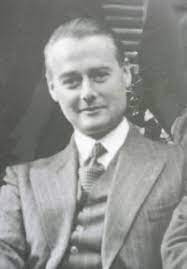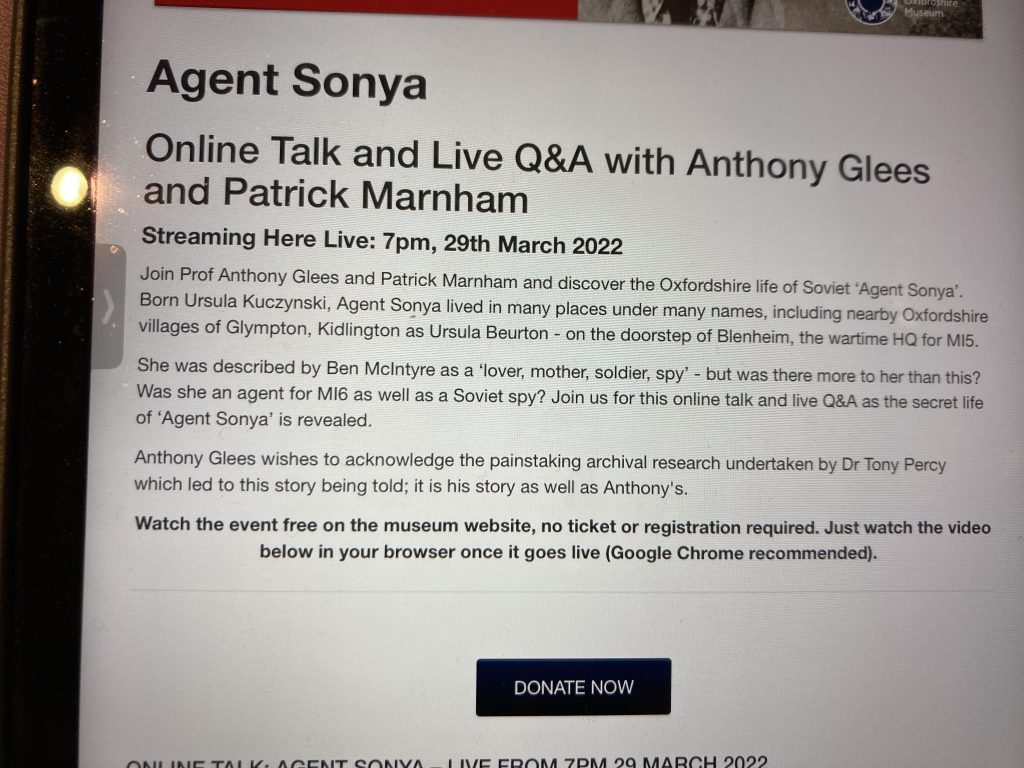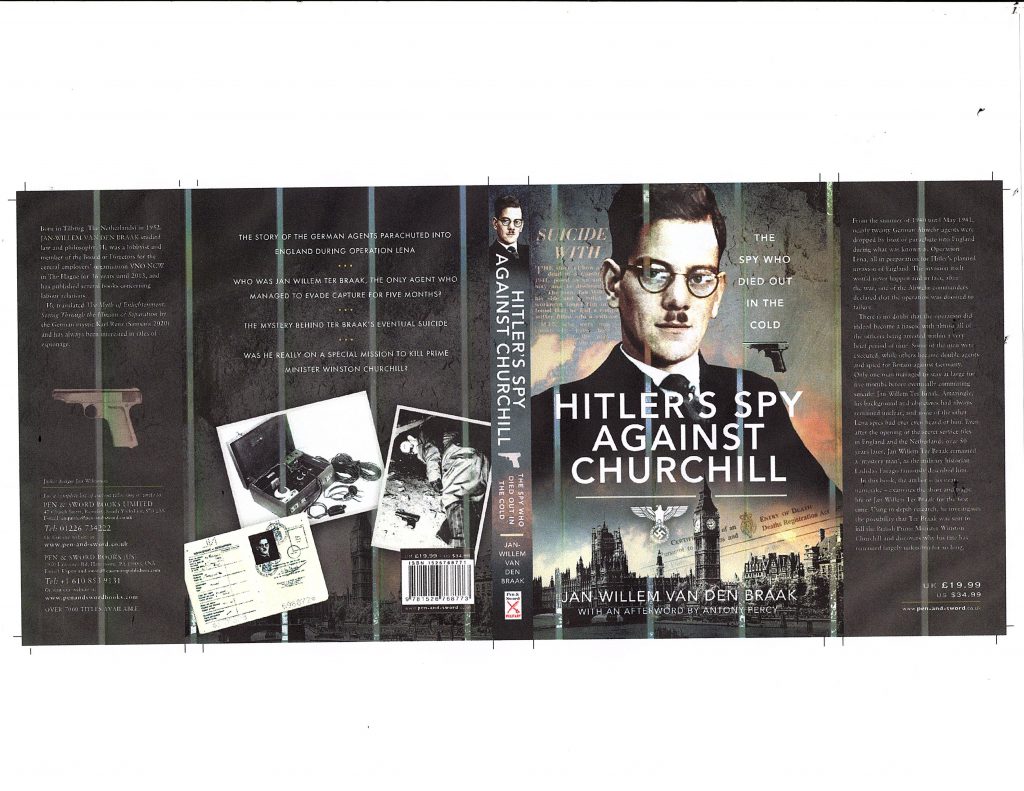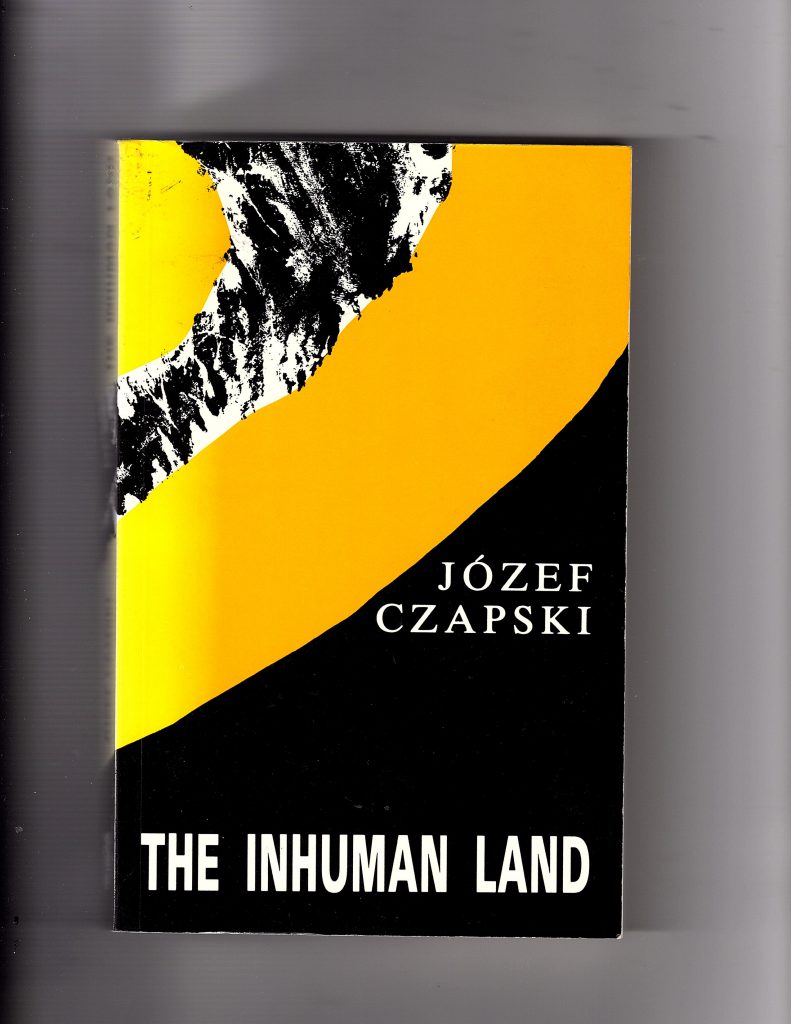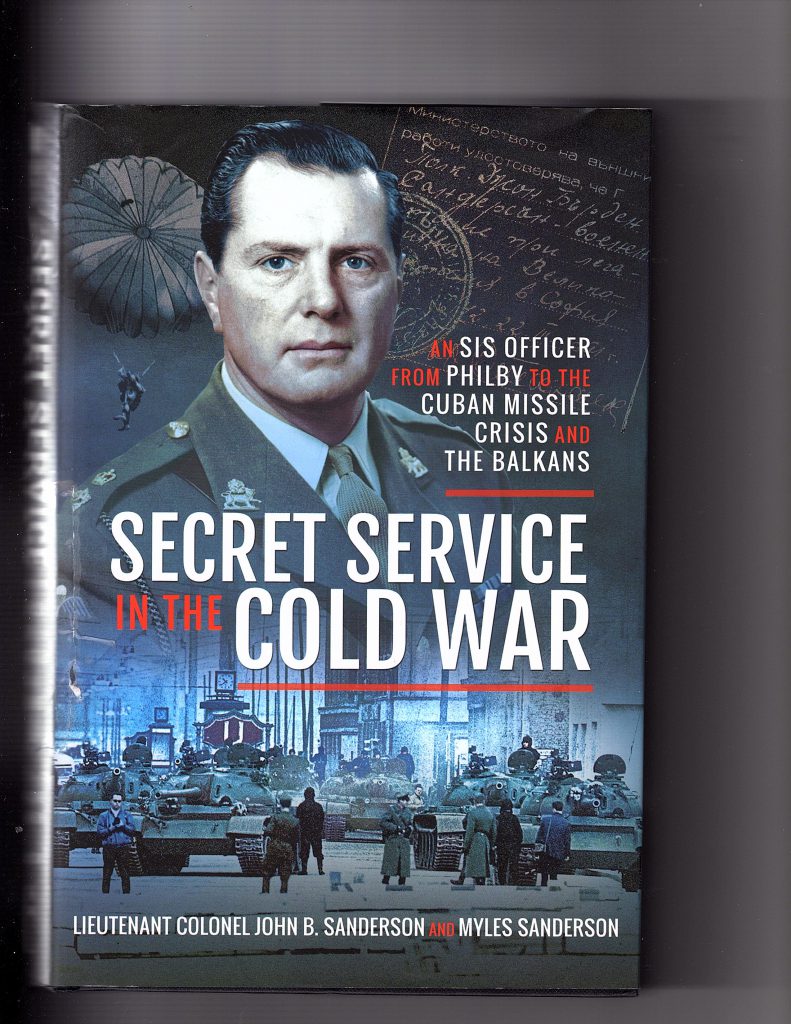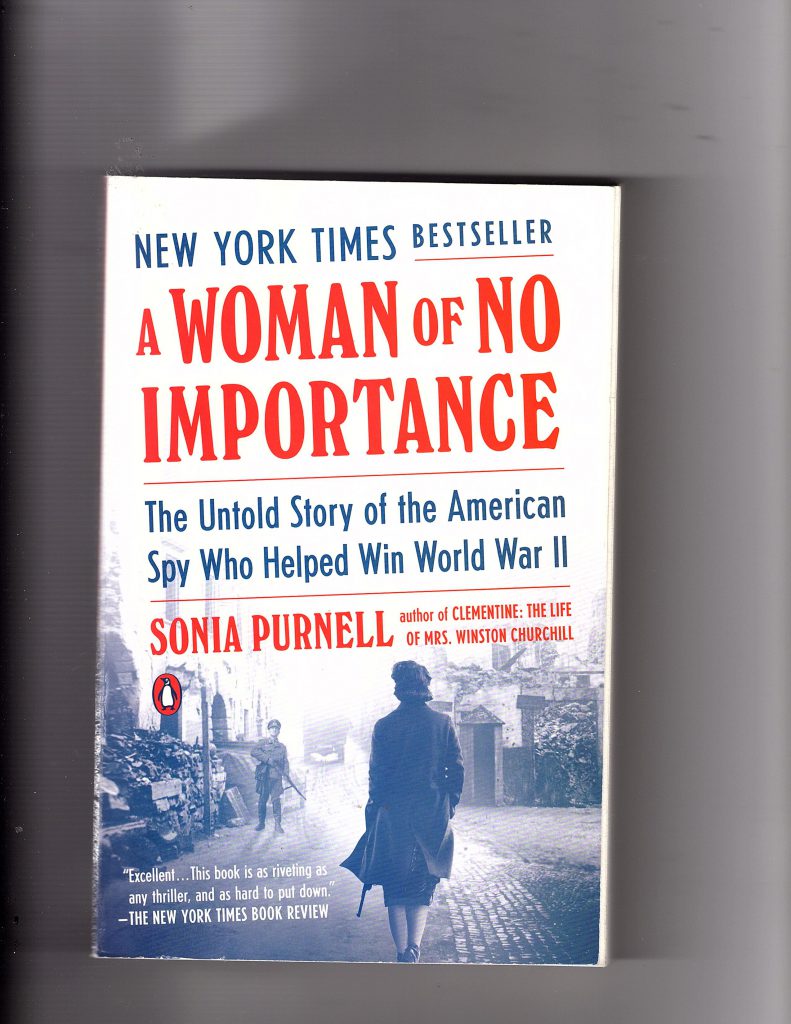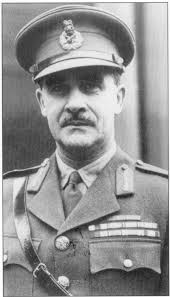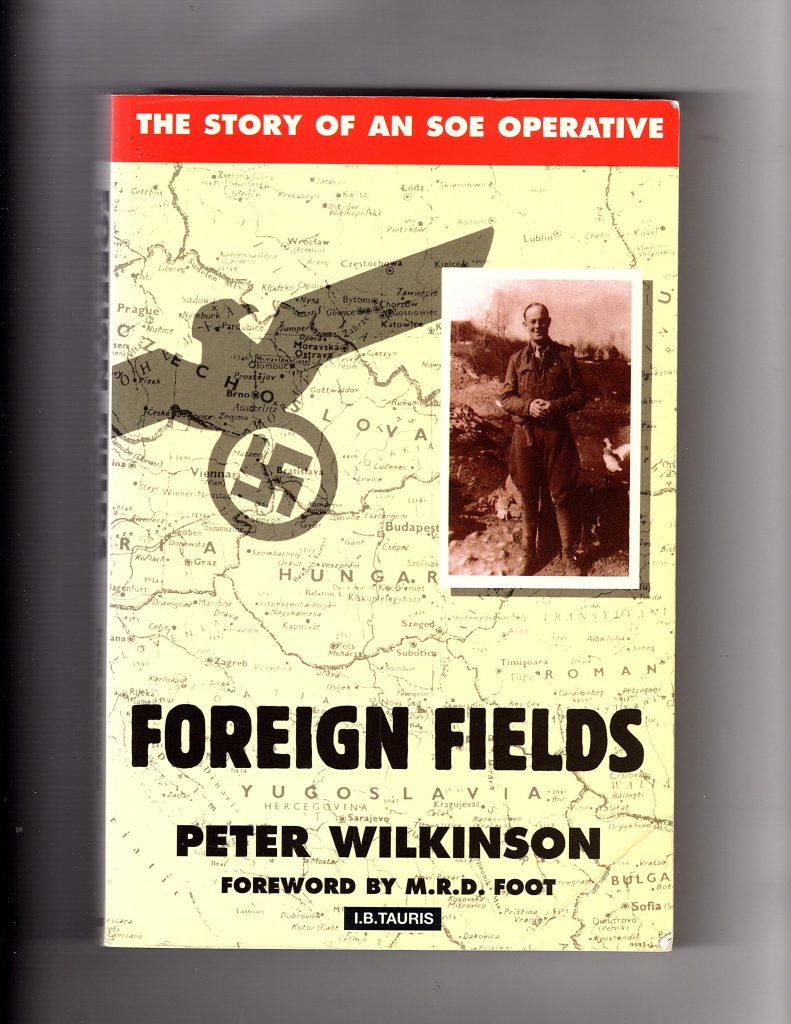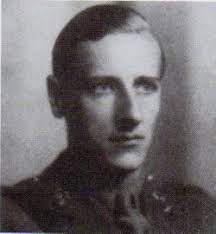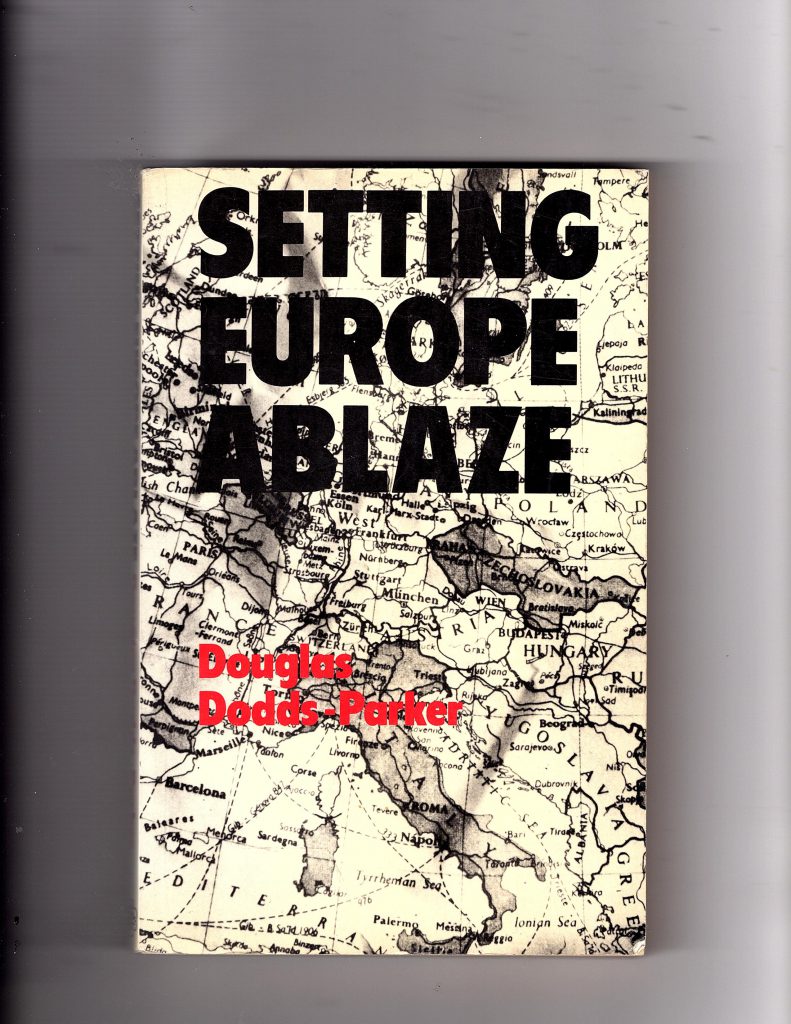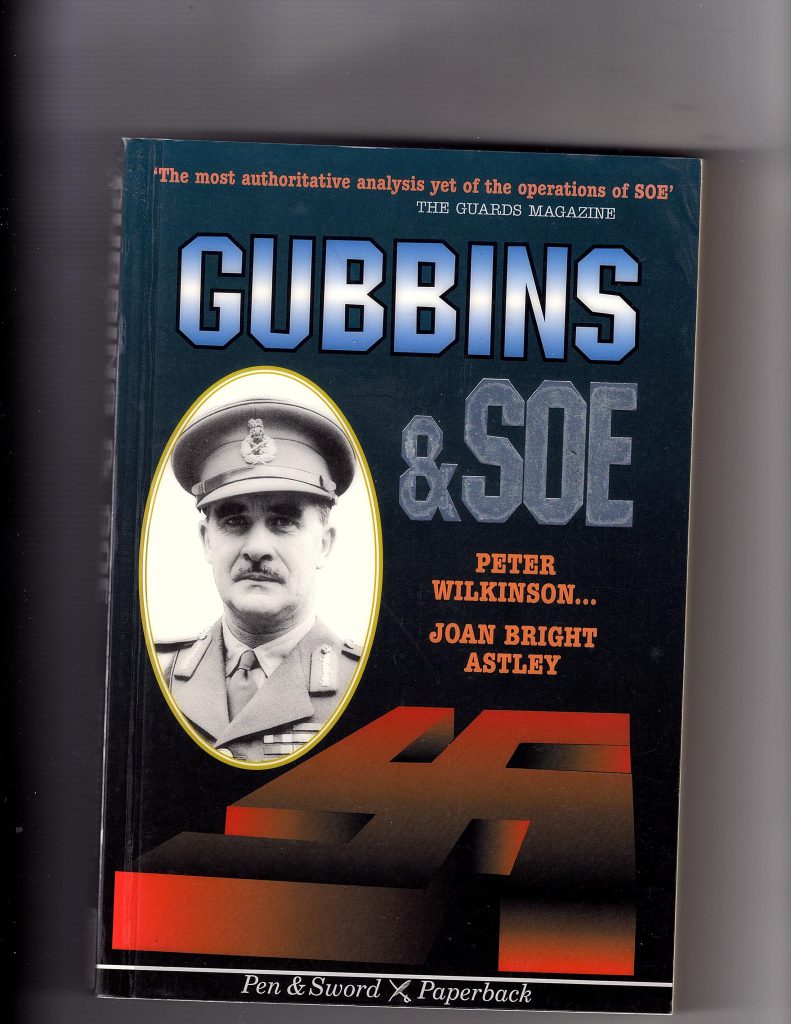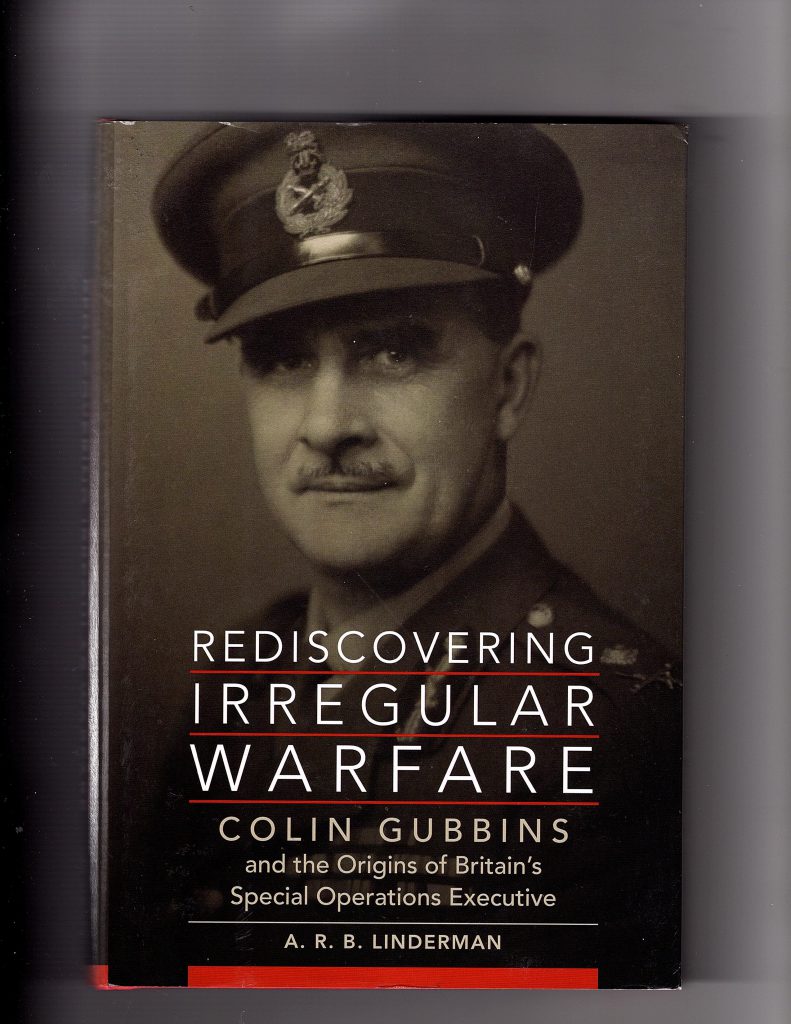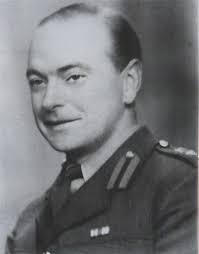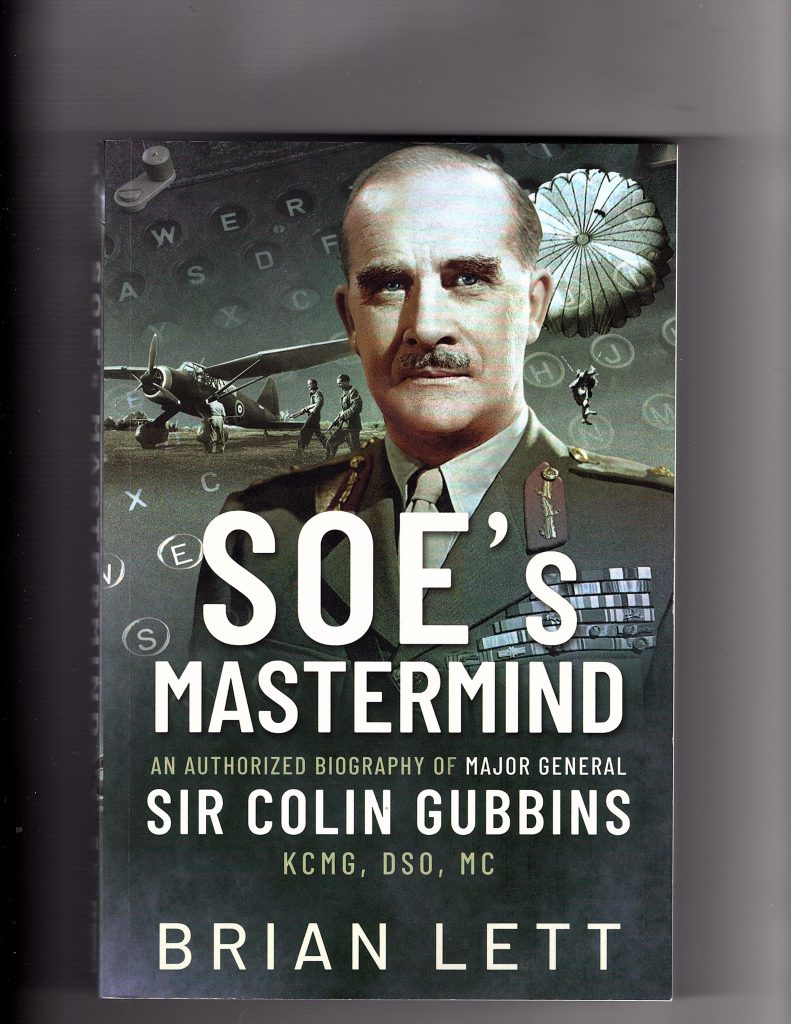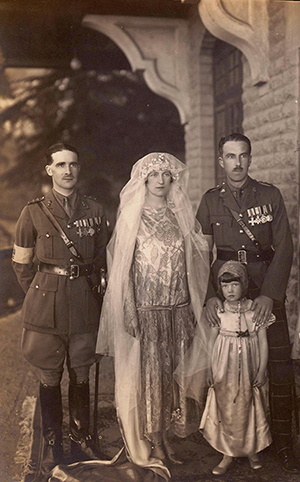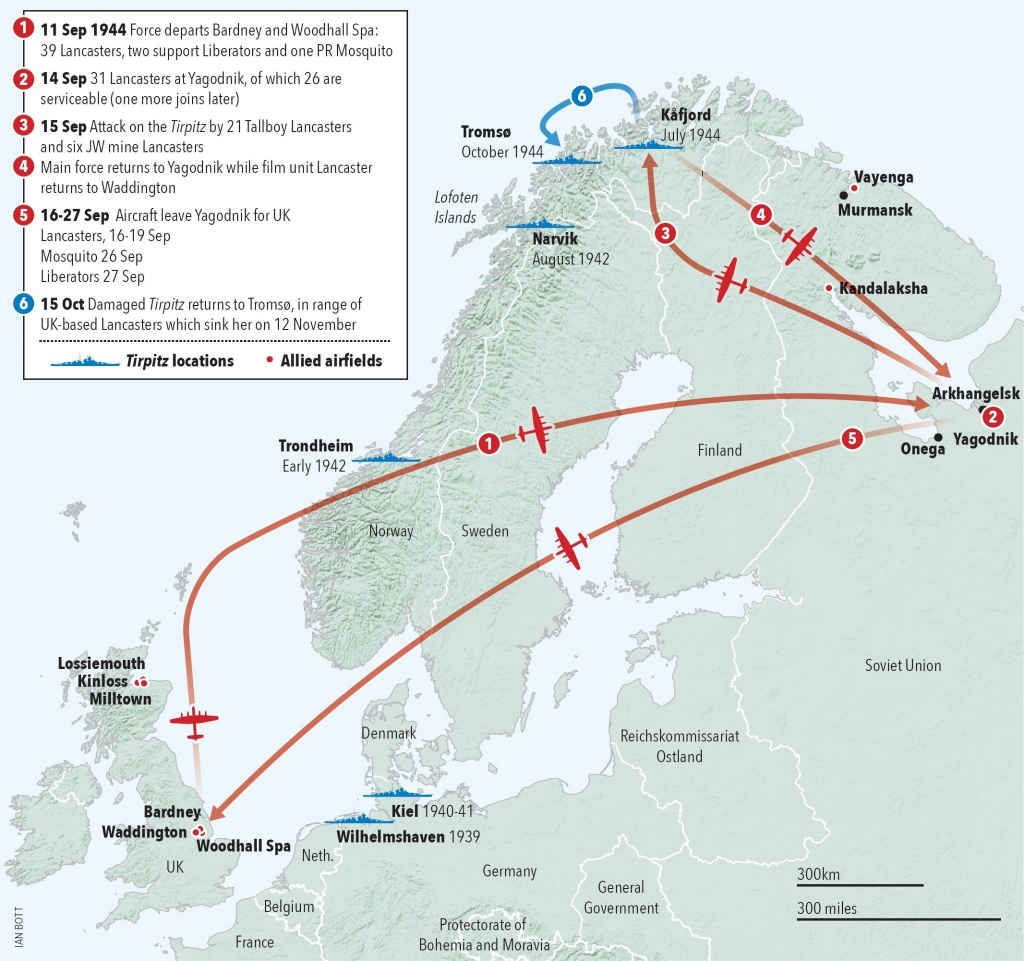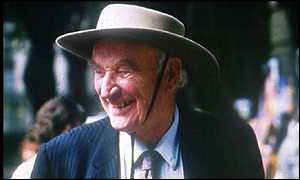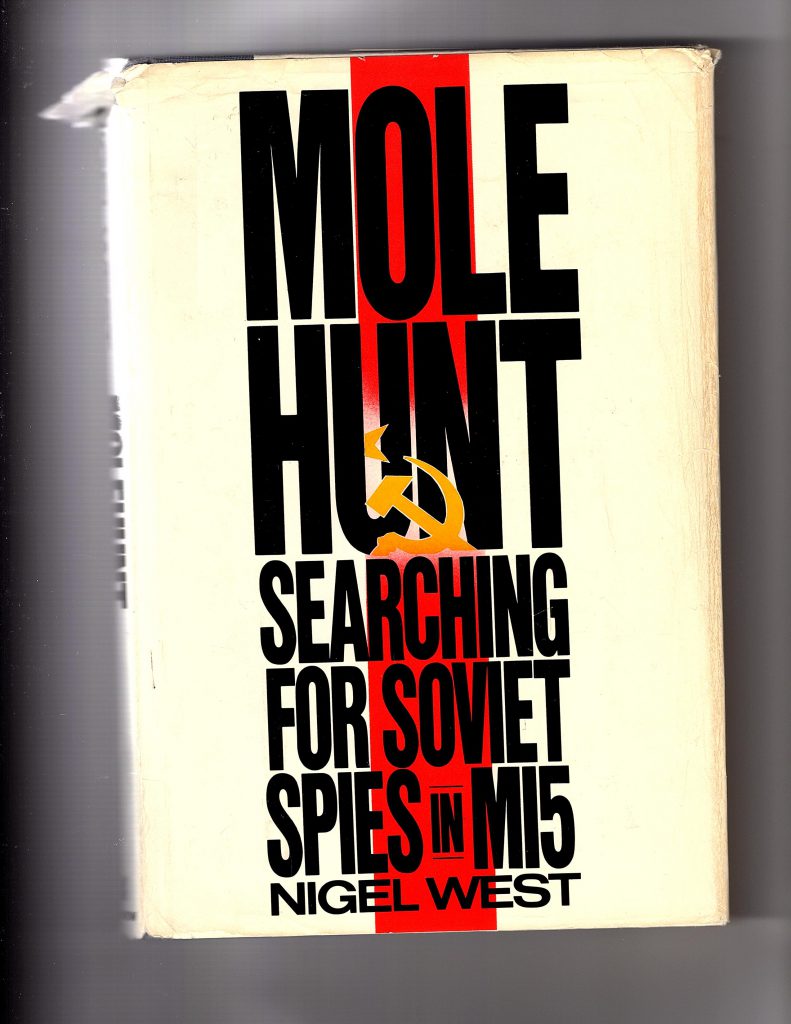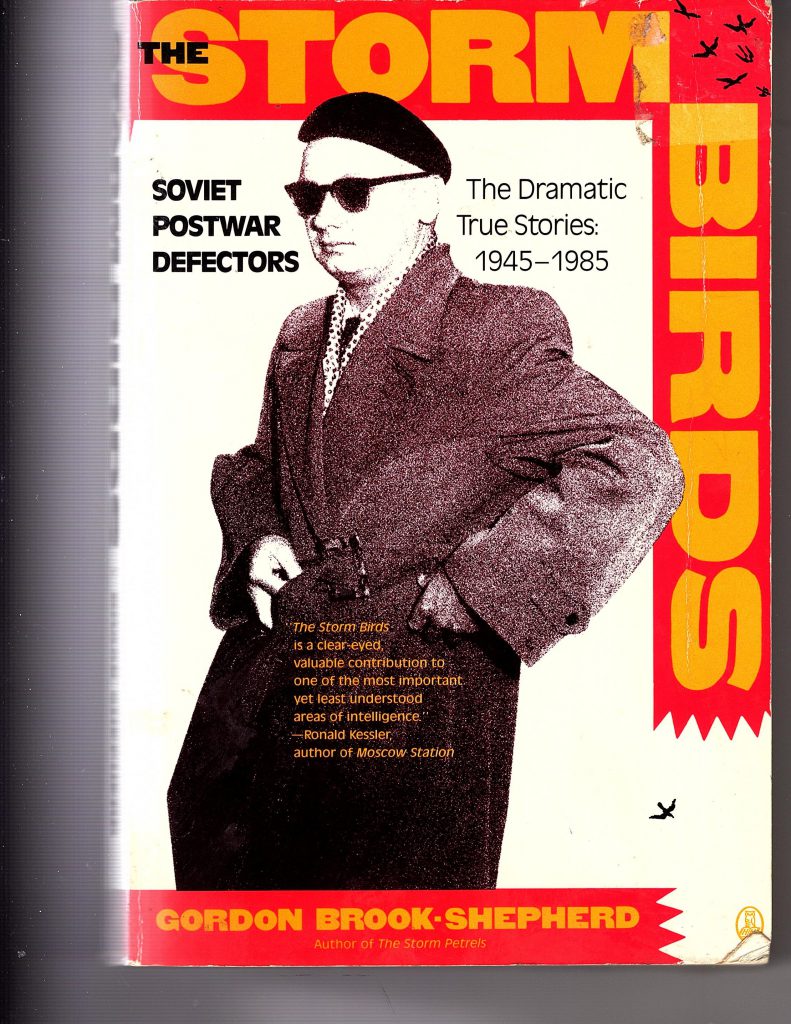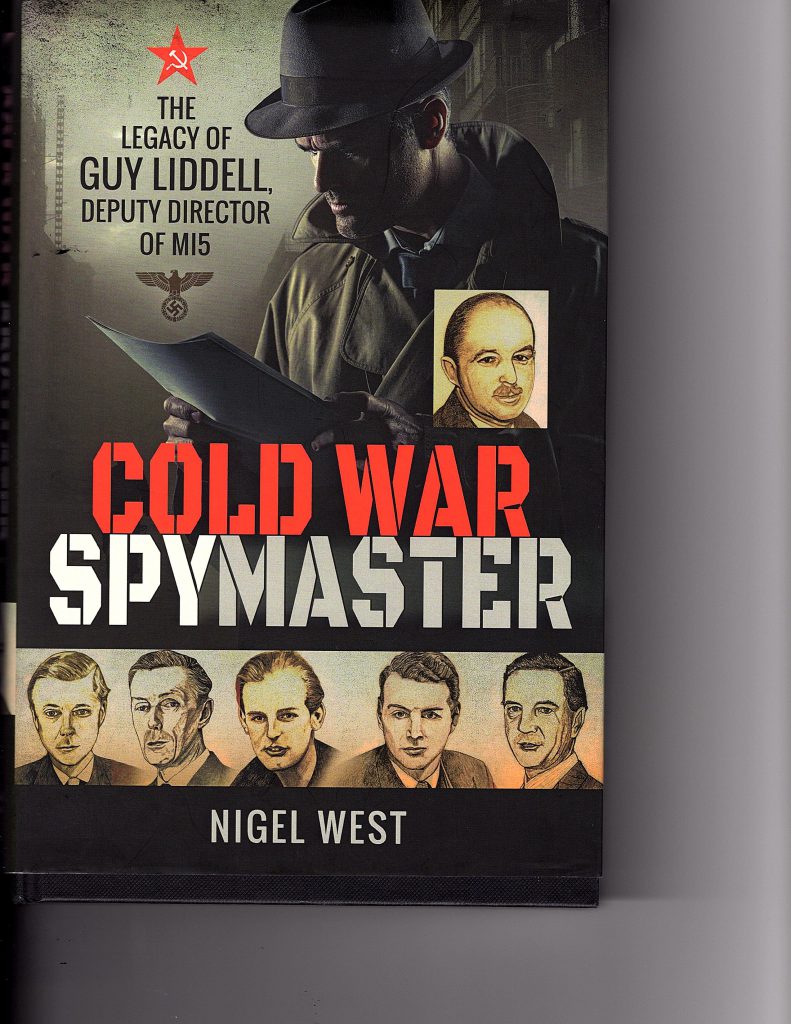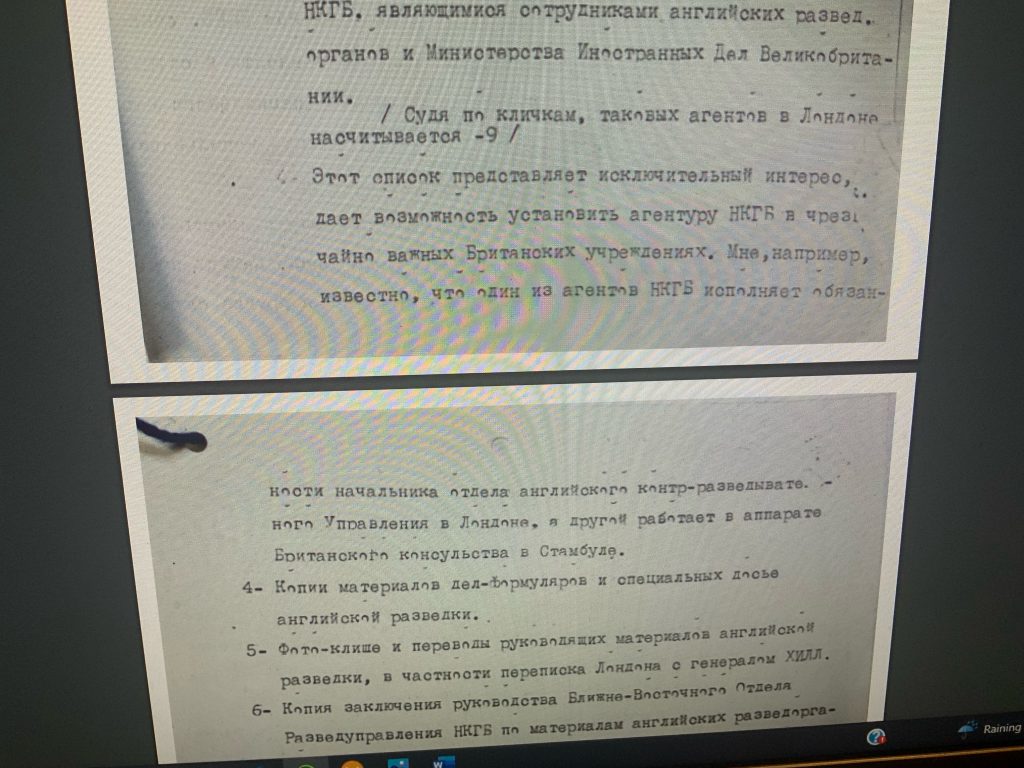
[A word of caution: this is a meticulous analysis of a few days in June 1943, and may present quite a challenge to the casual reader. Yet I consider it a vital contribution – and an essential legacy for posterity – to the establishment of a more accurate account of several aspects of World War II: the collapse of the PROSPER circuit; the leadership of SOE; the management of, and instructions to, potential ‘secret armies’ in France; the directives of the Chiefs of Staff in planning deception campaigns; and the behaviour of Winston Churchill in trying to appease Stalin. Above all, it highlights the deficiencies of authorized histories, the unreliability of personal ‘memory’, and the naivety of any historian, biographer or journalist who lays too much trust in what such sources say.]
I return to the vexed problem of the movements of Major Francis Suttill (‘PROSPER’) in June 1943. I have earlier presented the hypothesis that PROSPER made two visits to the UK from France in the summer of 1943, an idea that neatly accommodates all the conflicting accounts, from various sources, of his movements in that fateful period. Having spent considerable time inspecting most of the relevant archival material, in November I attempted a renewal of my aborted email discussion with Suttill’s son, Francis Suttill Jr. This gentleman had published a revised version of his 2014 work Shadows in the Fog as PROSPER: Major Suttill’s French Resistance Network in 2018, but I found much of what he wrote confusing. Gratifyingly, Suttill then responded to my outstanding queries, and we exchanged some further emails on the subject in early December 2022, after which I sent him a comprehensive challenge to the chronology he presents in his book. In this piece I examine closely the various explanations of PROSPER’s whereabouts in the middle of June 1943.
Contents:
Introduction: Who, When, Where, Why, What and How
The Essential Problem
M. R. D. Foot’s ‘SOE in France’
E. H. Cookridge’s ‘Inside SOE’
Stella King’s ‘Jacqueline’
Patrick Marnham’s ‘War in the Shadows’
Francis Suttill’s ‘PROSPER: Major Suttill’s French Resistance Network’
My Letter to Suttill
The Relevant Documents
- i) Boxshall’s Chronology
- ii) The Interrogations of Gaston Cohen
- iii) The Evidence of Pierre Culioli
The Flit
Francis Suttill’s Article
Conclusions
* * * * * * * * * *
Introduction: Who, When, Where, Why, What and How
The events concern SOE’s F Section, consisting mainly of British agents in France (as opposed to the Free French RF Section), led by the mustard-keen but incompetent Maurice Buckmaster. Managing the networks around Paris is PROSPER, who was parachuted into France in October 1942. His close colleagues are Gilbert Norman (ARCHAMBAUD), his wireless operator, and Andrée Borrel (DENISE), his courier. They are based in Paris, and meet socially too frequently for their own good. PROSPER is trying to rebuild circuits after the previous CARTE organization was found to have been infiltrated by traitors, and to prepare secret armies for the invasion he expects later that summer.
The period under study runs from June 10 to June 16, 1943. PROSPER harbours suspicions about the reliability of his landing officer, Henri Déricourt (GILBERT), who actually features minimally in this episode, but who fatally exposed the network through his contacts with the Sicherheitsdienst (see https://coldspur.com/the-demise-of-prosper/ ). PROSPER is also concerned that his second wireless officer, Jack Agazarian (MARCEL) has been transmitting across networks on behalf of too many agents, and thus represents a security risk. PROSPER also has to deal with Pierre Culioli (ADOLPHE), who runs an eponymous network in the Sologne under PROSPER’s control, Culioli being a sometimes difficult but energetic character who – perhaps with some justification – bears some resentment against the English. Another wireless operator, Gaston Cohen (WATCHMAKER) is scheduled to be flown in to assist the JUGGLER circuit. Arnel Guerne, a member of PROSPER’s circuit, is a vital witness, even though he was a proven liar.
June 10 is a significant date since it defines the beginning of the monthly ‘moon period’, during which flights bringing in agents and supplies (arms, equipment and luxuries) are possible. Since navigation has to be undertaken by sight, moonlight is necessary: several operations have to be abandoned because of bad weather. Two squadrons, based in Tempsford, Bedfordshire, are involved: 138 Squadron, using primarily Halifaxes, is deployed mostly for parachuting operations, while 161 Squadron, using Lysanders and Whitleys (and one Hudson), is mainly involved in landing on French territory, thus being able to pick up passengers as well as drop them off. (It occasionally runs parachute operations as well.) Thus the requirement arises for experts to select suitable landing-grounds and prepare flares and signals to direct and welcome the arriving aircraft.
The territory covered is extensive. Rather mysteriously – and provocatively – the first two maps provided with Foot’s SOE in France (as endpapers in my 1966 edition) describe the state of the circuits in August 1942 (i.e. two months before PROSPER arrived in France) and in August 1943 (i.e. two months after he was arrested). Thus the precise areas of coverage, and the key drop areas, in June 1943, are not marked on either map. (I have inserted some important locations on the copy shown here.) Travel is somewhat hazardous: motor traffic is not practical for long journeys, so the rail network – which requires passing through the minor hub of Orléans, and the major hub of Paris in order to move from the Sologne to northern sectors of the PROSPER network – becomes an indispensable factor in the travels of Suttill and other agents.
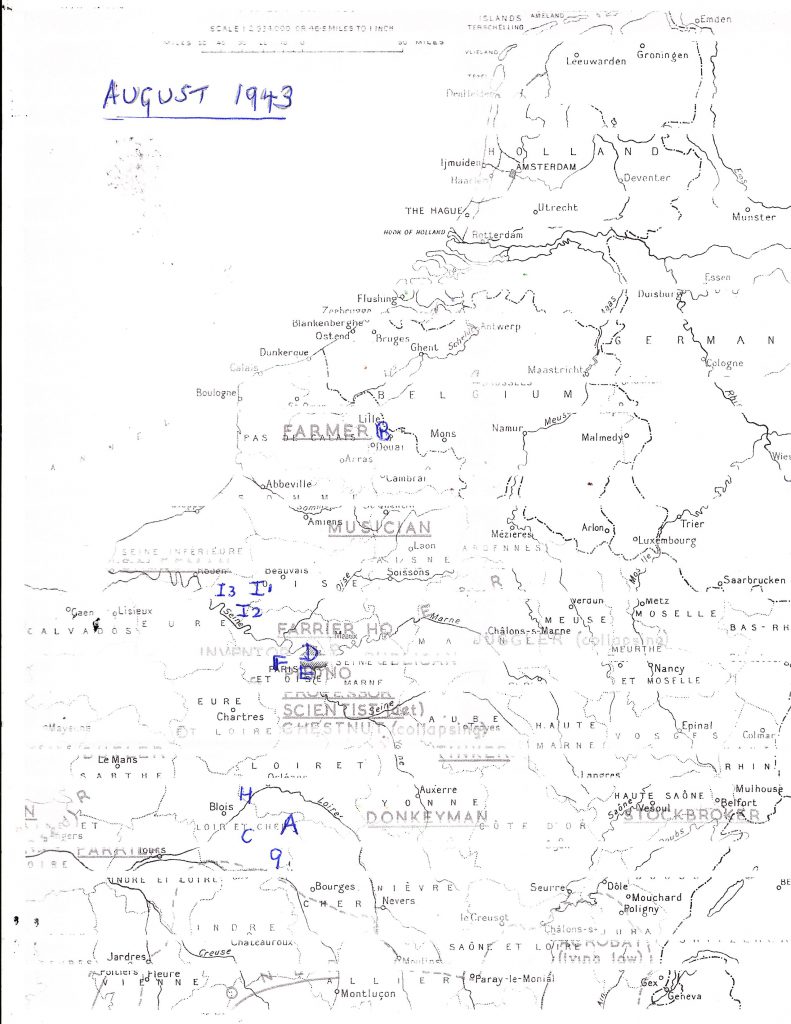
Legend:
A Chaunont-sur-Tharonne (May 20)
B Lille (May 21)
C Neuvy (June 10-11)
D Paris (June 11)
I (1,2,3) possible reception sites: Trie-Château, Neaufles, Lyons-le-Forêt (June 11-12)
E Paris (June 12)
F Bazemont (June 12-13)
G Romorantin (June 13)
H Avaray (June 13)
For an analysis of the activities of this critical month, several archival sources are invaluable, although practically all are flawed in some way. Several reports of Operations at Tempsford, including a Daily Summary, and individual pilots’ reports for both squadrons have been released to the National Archives, but Pilots’ Reports for 138 Squadron for June and July 1943 are unaccountably missing, as are 161 Squadron’s Operational Instructions for May and June. Francis Suttill’s Personal File is woefully thin. Gaston Cohen’s is non-existent, and a critical fragment reputedly passed on to M. R. D. Foot by the SOE Advisor, Edwin Boxshall, exists only in bootleg form. Some other reports and transcriptions appear as if they have been edited or redacted before publication. Patrick Marnham has reported on some important items in French archives. The official histories of F Section overlook this troublesome period. The memoirs published by Maurice Buckmaster are scandalously duplicitous and self-contradictory: parts of his diary were inspected by Francis Suttill, Jr., but are not generally available. Much of the contribution from Cookridge and Marshall comes from interviews with participants, but no transcripts of what they said are available, and their testimonies cannot automatically be trusted, as they are frequently contradictory.
The Essential Problem
Why are the activities of PROSPER at this time important? In explaining their significance, and the events leading up his arrest on June 24, 1943, I shall first re-present analysis that I have published here before, but give it a slightly different emphasis. The fact is that multiple histories of SOE have stated that PROSPER, having left for the UK on May 14 for consultations, did not return until some time between June 10 and June 14, and their accounts include the fact that he had meetings with Winston Churchill during the period he was away. Such discussions reputedly encouraged PROSPER to believe that an invasion of Northern France was imminent, and that his underground armies should get ready to assist it. An initiative of that kind, however, would have been entirely contrary to what the Chiefs of Staff were planning at that time. The re-entry to Europe (the so-called ‘Second Front’) had been deferred until the first half of 1944, and premature deployment of ‘secret armies’ had been forbidden.
Francis Suttill Jr. has correctly pointed out that his father returned to France on May 20 (although the detailed Appendix in his book fails to list him as one of the persons parachuted in on the corresponding CHESTNUT 4/BRICKLAYER operation), and that, since Churchill was out of the country during that period, no encounter with PROSPER could have taken place. The problem is, however, that he uses this datum to argue that the British authorities must have been innocent of any deception concerning F Section and its resistance forces in France, and that the collapse of PROSPER and his network was due entirely to some careless practices in tradecraft, and to the ingenuity of the Abwehr and the Sicherheitsdienst. This argument has been enthusiastically endorsed by British officialdom, in the person of Mark Seaman, the so-called ‘SOE historian’, and thus risks becoming the default statement on the record of SOE and the Chiefs of Staff in those hectic months of 1943.
Thus, while ignoring most of the evidence that suggests that F Section was badly misused, Mr Suttill, in a lengthy concluding chapter in his book, rubbishes all other histories and biographies that question the integrity of the British authorities. He thereby accuses the authors of these works of perpetuating a shabby ‘conspiracy theory’. Yet for several decades, the alternative version of PROSPER’s itinerary has persisted, and was even, in outline, a staple element of M. R. D. Foot’s authorized history. The SOE – and, after its dismantlement, the Foreign Office – promoted and supported the story that PROSPER returned to France on June 12, and then, when Francis Suttill Jr. showed that his father had dropped back in on May 20, immediately forgot their traditional position and, like the worst Communist apparat, boosted the new version of the ‘facts’.
Thus every new entrant to the field has to deal with the fact that PROSPER was for some reason energized to try to ramp up the volume of arms shipments, and exhort the secret armies to prepare themselves, while accepting the impossibility that he could have received an individualized order from the Prime Minister. Patrick Marnham, for instance, in War in the Shadows, attributes PROSPER’s actions to what he heard from his boss Maurice Buckmaster, while he was in London.
So why would so many authors adopt such a controversial story? On what evidence were they basing their narratives? What could the substance behind such claims be? It starts with M. R. D. Foot, and his SOE in France, which first appeared in 1966.
M. R. D. Foot’s ‘SOE in France’
In the first edition, having described how Déricourt had arranged PROSPER’s pick-up, on May 13-14, ‘by Lysander from a ground in the Cher valley a few miles east of Tours’, Foot then presented his return as follows: “Suttill, in any event, was sent back to Paris from London about 12 June ‘with an “alert” signal’, warning the whole circuit to stand by’.” His source for this datum was an interrogation of Gaston Cohen dated October 11, 1943. Rather mysteriously, the record of this interrogation (or any remnant of Cohen’s Personal File) has not been made available to the National Archives. Cohen, whose codename was WATCHMAKER, was a wireless-operator who had been flown out in the middle of June 1943, and subsequently escaped back to the UK. I shall inspect his story later in this piece.
Remarkably, as a feature of the ‘authorized’ history, this account remained unchallenged for thirty-eight years. When the new edition of SOE in France was published in 2004, the passage above remained unchanged, except that ‘about 12 June’ was replaced with ‘in late May’. No other explanation was offered. The same reference to the Cohen interrogation was given. The Cohen file is still not available. Quite extraordinarily, Francis Suttill has explained to me that he himself convinced Foot to make the change, based on the records of his father’s return in late May (from personal items, and Maurice Buckmaster’s diary). The ‘authorized historian’ caved in without explaining why the material he had used forty years beforehand was no longer valid.
One highly important aspect of this scenario is the fact that the Foreign Office, having advised Foot of Suttill’s return to France on June 12, tried to be careful to maintain that fiction as he carried out his researches. In other words, no trace of Suttill’s presence in France between May 20 and that date should have been allowed to escape. Unhappily for them – in an aside that no one appeared to notice in forty years – was Foot’s observation, on p 314 of the 1966 edition, that ‘E. M. Wilkinson (ALEXANDRE) for example was picked up by the Germans in Paris on 6 June, in a police trap Suttill and Antelme had vainly begged him not to enter’. How and why this paradox evaded Foot and the censors is inexplicable. To reinforce the story of PROSPER’s return in May, both Henri Déricourt and Jack Agazarian, in their separate reports to their SOE bosses (in HS 9/421 & HS 9/11-1, respectively) refer to ‘PROSPER’s return’ in the context of late May, when the recently arrived agents ELIE (Sidney Jones) and SIMONE (Vera Leigh) are instructed to wait for his arrival to receive instructions as to what they should do next.
A further indication of a return by Prosper in June (thus echoing the long-standing ‘official’ story, but now reinforcing the hypothesis that Prosper undertook two journeys) was the contribution by the Tempsford pilot Frank (‘Bunny’) Rymills, who actually flew the Lysander that brought in ELIE and SIMONE. Rymills wrote, in Henri Déricourt; Double or Triple Agent (a publish-on-demand book edited by Bernard O’Connor, which was first available ca. 2015): “Prosper parachuted back into France to Culioli’s reception on the night 14/15 and warned him on landing to expect two Canadians within a day or two. He also arranged for Culioli to bring them to Paris around the 22 June. Déricourt had been on holiday in the Loire valley during the first two weeks of the month but had returned in time to receive a double Lysander operation (Teacher) on the night 15/16 June.”
Another significant implication was that the details of Cohen’s movements had to be concealed –except that his drop could not be avoided completely. When the fragments were shown to Foot, the emendations that ‘corrected’ Cohen’s arrival date from June 10 to June 13 (which I also analyze below) were clear, and thus were able to confirm the official story. Yet the changes were made at the time, in October 1943, as the typed English-language translation of Cohen’s interrogation shows. That proves that the deception was conceived and executed soon after the events. SOE leaders must have recognized, after the massive rebuke that they received from the Chiefs of Staff that summer, with Hambro’s subsequent dismissal, what an embarrassment it would be if Suttill’s sudden June visit to the UK were disclosed. The conspiracy ran deep – even to the extent of doctoring the operational records of Squadron 138 with a late annotation. Therefore, if he had been alert and professional, Foot should have had a serious re-think when he received Francis Suttill Jr.’s insights about the May 20 return. He did not re-assess anything: by then he was probably totally fed up with the whole business, and with the way in which he had been deceived.
Patrick Marnham has reminded me that Foot himself, in SOE: The Special Operations Executive: 1940-46 (published in 1999), wrote that Churchill may have ‘seen individual agents on their way into the field, and mis-briefed them to suit a deception plan of which only he and Colonel Bevan held the key’.
Some other historians, having access to some of the participants in the events, told a story that was largely consistent with Foot’s original narrative.
E. H. Cookridge’s ‘Inside SOE’
Cookridge’s book was published the same year in which Foot’s authorized history appeared – 1966. Yet he wrote it without any help (guidance) from the Foreign Office, and had no direct access to SOE archives in the UK. (Foot believed that he may have been given surreptitious access to source material by Colonel Sammy Lohan.) He was helped by hundreds of interviewees, and was able to inspect SOE records that had been imported into some foreign archives. Cookridge claimed that he was able to ‘check, corroborate, and, if need be, reject eye-witness accounts obtained from surviving SOE agents and Resistance leaders and members’, but, since the first name he singles out for special mention is the mendacious and manipulated Maurice Buckmaster, the reader needs to be on his or her guard.
His coverage of the events under inspection is uneven. He is under the impression that Suttill stayed in London from May 14 until June 12, during which time he expressed his fears that the PROSPER network had been infiltrated by the Germans. As an example, Cookridge cites the (undated) arrest of Captain Wilkinson, the head of the network in Angers. Yet Wilkinson was not arrested until June 6: if still receiving consultations in London, Suttill would thus have not known the details. Buckmaster, moreover, must have encouraged Foot and Cookridge to accept that Suttill did not return to France until June 12/13, the details in Buckmaster’s Diary (which are not available to the public, and seemed to confirm to Suttill’s son that his father returned on May 20) being conveniently forgotten or overlooked by him.
Cookridge reinforces his chronology by mentioning that Suttill was still in London when Gaston Cohen (JUSTIN) was flown in, thus consolidating Cohen’s claim that he arrived on June 10/11 – but contradicting the facts about his reception by PROSPER, the archival evidence to which Cookridge obviously did not have access. He then goes on to describe the first drop resulting from Suttill’s ‘stepping-up’ of the pace of arms and explosives while he was in London – the notorious operation to Neuvy, south-west of Orléans. He describes the large group of resistance members gathered to receive a large drop of containers – over a dozen. After twelve were dropped, one of them flared and exploded, and others were ignited. Despite the known presence of German field police at Fontaine-en-Sologne, only three kilometres away, no Germans arrived, and the group was able to salvage a few containers. The next day, however, the German police was aroused by calls with information, and the Gestapo from Blois became involved. This resulted in punitive operations in which many persons were arrested.
Culioli, in whose territory the drop occurred, was horrified. In Cookridge’s words, he ‘sent an urgent message to Déricourt asking him to tell the French section to cancel all air operations in the area for the time being’, and added: “It is an unsolved mystery whether this message was ever sent to London.” But it is also puzzling why Culioli would have thought to contact Déricourt, who was simply an officer responsible for arranging landing-areas for Lysanders, not involved with parachuting supplies in through the use of Halifaxes, and who supported Squadron 161, not 138. Culioli would more naturally have used his courier channel to contact ARCHAMBAULD (Gilbert Norman) and PROSPER himself. After all, by the revised accounts delivered by Francis Suttill, Jr, PROSPER had been in the country since May 20, and was busy in Paris at the time.
Cookridge then stumbles over the next events. He goes on to describe how Culioli received Major Suttill on June 13. His arrival had been announced ‘by radio signals and in a “personal message” on the BBC’. Cookridge goes on to write: “Culioli expressed surprise that Suttill was dropped in the Sologne, despite his warnings.” But this does not make sense. If Suttill had parachuted in on the same night as the explosions occurred, it would have been impossible for Culioli to have forestalled PROSPER’s arrival, and presumably impracticable for him to act as reception for two different drops on the same night. Cookridge was being sold a false bill of goods by someone, and did not show enough perspicacity to detect the illogicalities. “Suttill did not offer any explanation”: indeed. Apparently, the pair of them had an opportunity to talk, only a short one, at the home of Guy Dutems, Culioli’s brother-in-law, where Suttill explained to Culioli that he had wanted to be received by him, implicitly suggesting that he had not wanted to entrust his passage to Déricourt. After dinner, Suttill was reportedly driven to Amboise (a town on the Loire, about 100 kilometres from Orléans) and caught a train to Orléans, where he changed for Paris. This might have seemed a dangerous manœuvre, what with all the Gestapo activity around. Yet the journeys apparently completed without a hitch.
Robert Marshall’s ‘All the King’s Men’
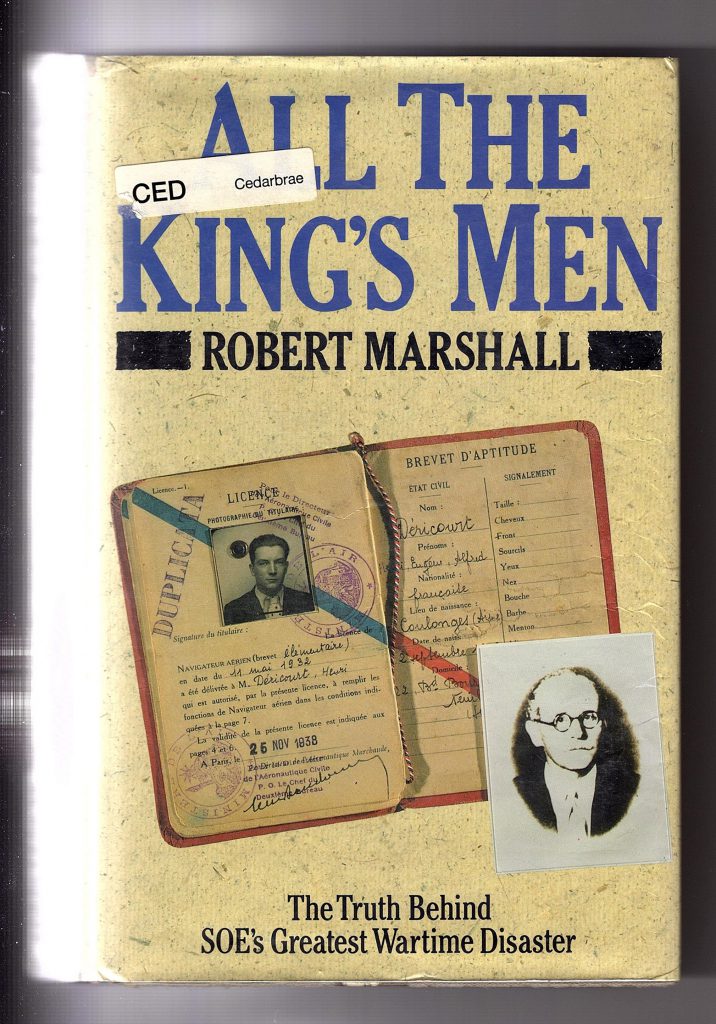
Robert Marshall’s account (published in 1988) provides further evidence that the imprecise identification of night operations covering two dates can lead to confusion. He relies largely on interviews he had with leading participants (e.g. Culioli, Harry Sporborg – Gubbins’s deputy at this time), as well as familiarity with Paul Guillaume’s La Sologne. Marshall draws attention to the unreliability of witnesses such as the Abwehr agent Richard Christmann, but one must also wonder how reliable Sporborg was, and whether he (in 1983) stubbornly supported the line that Foot had been given about Suttill’s extended presence in the UK until mid-June. Certainly, Marshall gives no indication that PROSPER was around when the Abwehr tried to set a trap for Déricourt at the Restaurant Capucines on June 9. (Marshall tells a vibrant and dramatic story about PROSPER’s meeting with Churchill, but it is unfortunately coloured by some imaginative detail about car-rides shared by Lord Selbourne and Suttill on their way to the Cabinet War Room in Whitehall. Marshall provides no source for this encounter, and, since the period in question was over the Whitsun weekend, the details are highly unlikely.)
His narrative concerning the explosions and PROSPER’s arrival differs slightly from that of Cookridge. While he claims that his story is based on the same Guillaume account that largely influences Marnham and Suttill, the Neuvy incident (although the location is not specified) is reported as taking place on June 11/12, with roughly the same outcome. Yet Marshall in 1986 also interviewed Culioli, who told him that he ‘sent a message to London’ the next day (presumably June 12), requesting they cancel all air operations for a while. By courier to ARCHAMBAUD, for further transmission? To Déricourt, as Cookridge was told? Marshall does not say. The very next night, however (presumably that of 12/13), Culioli was informed that Suttill was arriving by parachute on June 14 (June 13/14 or June 14/15?), and wanted a reception. It does not seem possible that this could have been a pre-arranged BBC message, since that would have required a negotiated activity to be confirmed though a coded meaningless sentence. “For some reason, Culioli’s message had not reached London,” wrote Marshall. But why Culioli imagined that a message could have been passed through the normal channels and transmission schedules, and then processed and acted upon in that short period of time is never examined.
PROSPER duly arrived, and the discussions at the house of Culioli’s brother-in-law are confirmed. PROSPER explained to Culioli his concerns about being received by anyone else, and expressed his disappointment about the coming invasion – not that it had been called off altogether for 1943, but that it had been delayed until the autumn. He then made arrangements for the arrival of the Canadians Pickersgill and Macalister, who were due to arrive on June 15/16, suggesting perhaps that this was fresh news that he had brought with him directly from the UK.
Stella King’s ‘Jacqueline’
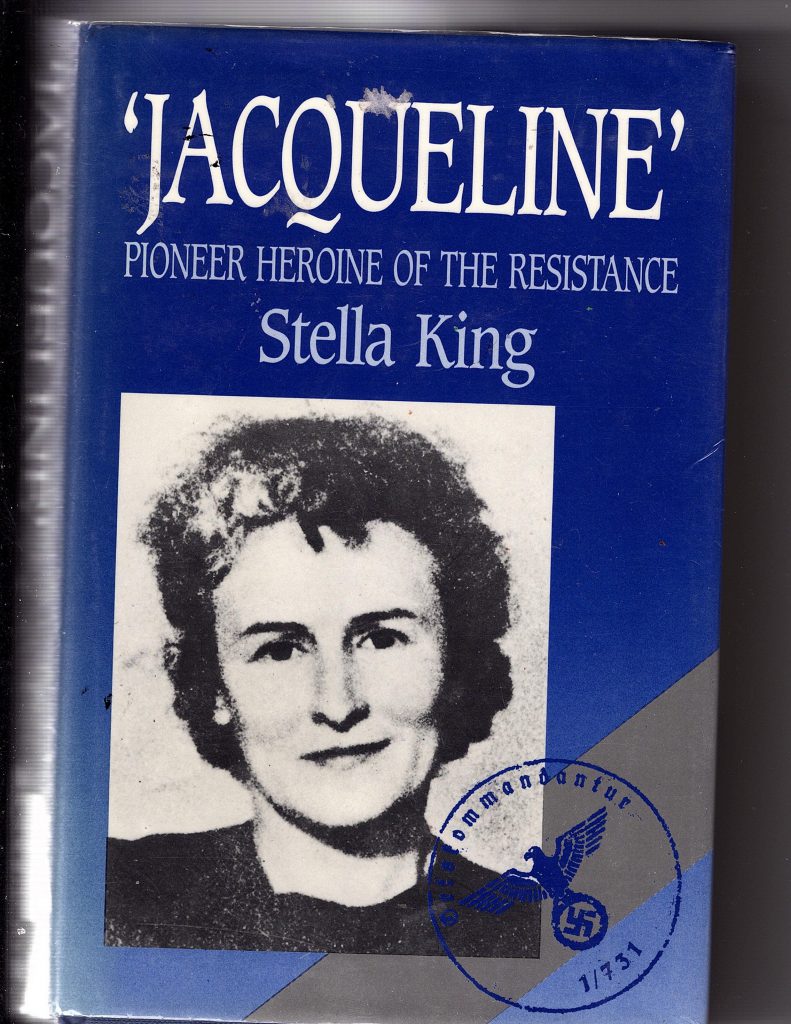
In 1989, Stella King published her biography of Yvonne Rudellat, sub-titled ‘Pioneer Heroine of the Resistance’. Rudellat became the co-leader of Culioli’s ADOLPHE circuit, as well as Culioli’s lover. Ms. King unfortunately does not provide any itemized references for her account of the events of mid-June, but she admits that she relied largely on the testimony of Pierre Culioli (as well as the assistance from the usual suspects in SOE and from the Foreign Office Advisors). Her chronology is, however, somewhat hazy. She has PROSPER, for some inexplicable reason, returning to France after his consultations at the beginning of May. When such gross errors are made, one has doubts about the organization of her material.
Yet King is very clear about the dating of the Neuvy incident, stating that it occurred on the night of June 13/14. She identifies the BBC message that heralded it; she names the captain of the Polish crew that controlled the Halifax Number Z179; she states that it arrived in the Neuvy area at 1:30 in the morning; she declares that the crew had no idea that any containers had exploded; she records that the plane returned to Tempsford at five past four ‘in the early hours of Whit Monday’. “Like onlookers at any accident, descriptions vary in small details as to what happened next,” she wrote, “although Pierre Culioli had no doubt at all.”
In fact, Culioli and Rudellat were present only as observers. Albert Le Meur was in charge, and the event was being used as a training exercise. After the work to tidy up and reclaim the undamaged containers, Culioli and Rudellat apparently bicycled back to their retreat at Nanteuil. And then the divergent accounts begin. According to Le Meur, a stormy meeting took place at the ADOLPHE headquarters ‘a day or so later’, attended by him, Culioli, Rudellat – and Suttill. Le Meur tried to convince PROSPER to suspend any more drops until matters had quietened down. But Suttill was adamant, and assured Le Meur that he would receive the order to continue – a somewhat strange construction, as the issuance of written orders would have been highly irregular and dangerous, and Suttill presumably had the authority to issue an oral one then and there. Le Meur told King that Culioli disappointed him by not participating in the argument, an assertion that is astonishing in its own right.
Yet, according to King, Culioli denied that the meeting ever occurred. She wrote: “He told me that the day after the Neuvy incident he sent, by courier Gaston Morand, a very detailed account of the events to the PROSPER chief, including the phrase ‘The Royal Air Force bestowed on us the gift of fireworks over and above the material they dropped’, and asking what action Reseau Adolphe should take.” (Such flowery, wordy messages would have been discouraged, and certainly not committed to incriminating paper.) Note that this testimony includes no inherent appeal to suspend operations: it is submissive. Culioli then (no date given) showed Le Meur PROSPER’s reply, which stressed that the explosions should not be exaggerated and that the drops should continue ‘without further anxiety’. He told King that Le Meur must have ‘with the passage of years’ fancifully converted the text of the letter into an imaginary meeting. Lastly, King has Suttill reputedly making even more strenuously his demands that preparations continue, since he was convinced that the invasion was imminent, as was the arrival of ‘at least one parachute regiment’.
At least one person is lying in this drama. Culioli apparently gave sharply differing testimonies to Marshall and King, all over a close period of time. In one account, he requests guidance; in the other he protests and wants operations suspended. According to King, he sends a written message by courier to PROSPER, who responds promptly by the same medium, and maybe follows up with a visit to reinforce the message. When speaking to Marshall, Culioli claims that he sent a message to London, and affects surprise when PROSPER parachutes in a day later. And Culioli apparently told Cookridge that he sent a message to Déricourt, of all people. “He had no doubt at all” – a ridiculous supposition concerning an obviously mendacious character.
Patrick Marnham’s ‘War in the Shadows’
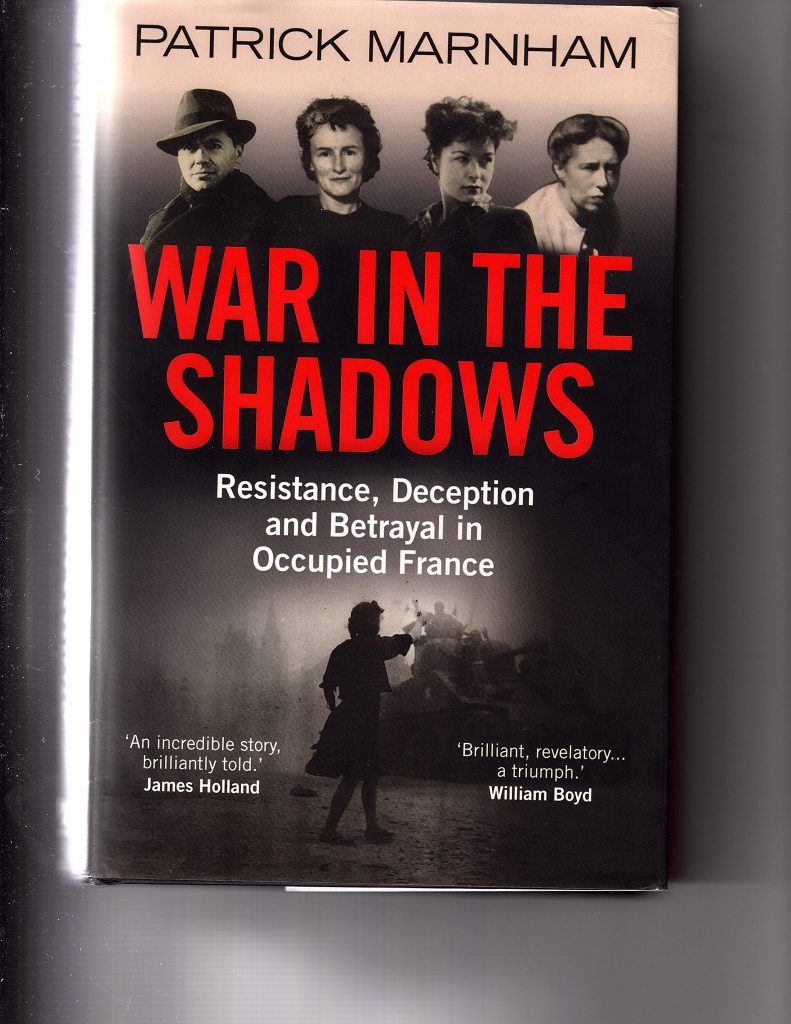
War in the Shadows appeared in 2020, after Francis Suttill’s publication [see below], so the first major change in the historiography is that it explicitly accepts Suttill’s account of his father’s (final) return to France as occurring on May 20. Thus Marnham spends no time exploring any possible activity on French soil by PROSPER at the beginning of June. He explains that PROSPER voiced his concerns about Déricourt’s reliability to his bosses in London, and expressed a desire to drop by parachute and be received by Culioli when he returned, even though he had damaged a leg when parachuting in in October 1942. Marnham declares that there is no evidence of PROSPER’s briefings while in London, but asserts that ‘we do know that when he returned to France it was with a new conviction in mind – that the long-awaited allied landings were imminent’. Yet that message differs in substance from how Marshall had represented PROSPER’s stance at the time.
Marnham then swiftly turns to the night of June 12/13, when, after hearing the BBC message ‘Les mousquetaires sont assis par terre’, an experienced group, including Culioli and Rudellat (JACQUELINE) gathered to receive a large parachute delivery outside the village of Neuvy. (The names of the attendees come from French departmental archives.) Then, using de Bayac’s 1969 account, Marnham reports that nine containers had been released when the explosions occurred. He includes vivid details of the damage caused, derived from statements of those present, and describes, although minimally, the increased activity by the Germans that was engendered by the commotion.
Rather bizarrely, Marnham quotes Suttill when describing that there was ‘a blinding glare as though from a phosphorous bomb’. This is doubly odd, since Suttill gives the date of the event as June 10/11, choosing to use the testimony of a Dr Paul Segelle, who was merely the nephew of one of the participants, rather than any of those who actually attended. This is in direct contradiction of Marnham’s chronology, and Suttill presents it as being heralded by the BBC message of ‘Le chien eternu dans les drapes’ (itself a misrepresentation of the signal as it is recorded in the National Archives at HS 8/444). The description, moreover, in fact comes from Guillaume’s ‘La Republique du Centre’ article, of 13/14 September 1947, Guillaume being a witness whom Suttill had elsewhere disparaged for getting the date wrong!
The emphasis thereafter shifts, with memories becoming a little vague. The character called Le Meur [see King, above] claimed that he was the prime mover behind the request to suspend operations; in any case, the members of the Sologne resistance pressed their leader, Culioli, to negotiate the pause. Le Meur said that ‘he had been present at a meeting at the “Le Cercle” hideout (a cottage in the woods near the village of Vielleins, a few kilometres north-west of Romorantin) with Pierre and “Jacqueline”, and that “Prosper” also attended’. But PROSPER refused to call a halt. This sudden and apparently incidental appearance of PROSPER is enigmatic, and not commented on by Marnham. Was he present at the reception? Apparently not. Then what brought him to Neuvy so soon after the explosions? (Marnham’s account appears to rely largely on Stella King’s ‘Jacqueline’, but ignores the fact that Culioli denied that the meeting ever happened.)
Marnham’s narrative closes by describing PROSPER as being ‘very tense’, the leader having returned from London with the conviction that the landings were imminent. If indeed he had just arrived with fresh instructions, however insincere or manipulative, he surely might have been tense. In the timeline that lies behind Marnham’s current assumptions, however, PROSPER had received his guidance over three weeks beforehand, should probably have calmed his nerves by then, and probably would have had discussions with Culioli already. Marnham concludes with the assessment: “ . . . he seems to have regarded Culioli’s sensible request as a near mutiny by the Reseau ADOLPHE; accordingly he sent Culioli a written order to continue organizing receptions.” This last datum also appears to have been derived from Stella King’s book. The written order has not survived (if it ever existed), but it is a very telling exchange.
Francis Suttill’s ‘PROSPER: Major Suttill’s French Resistance Network’
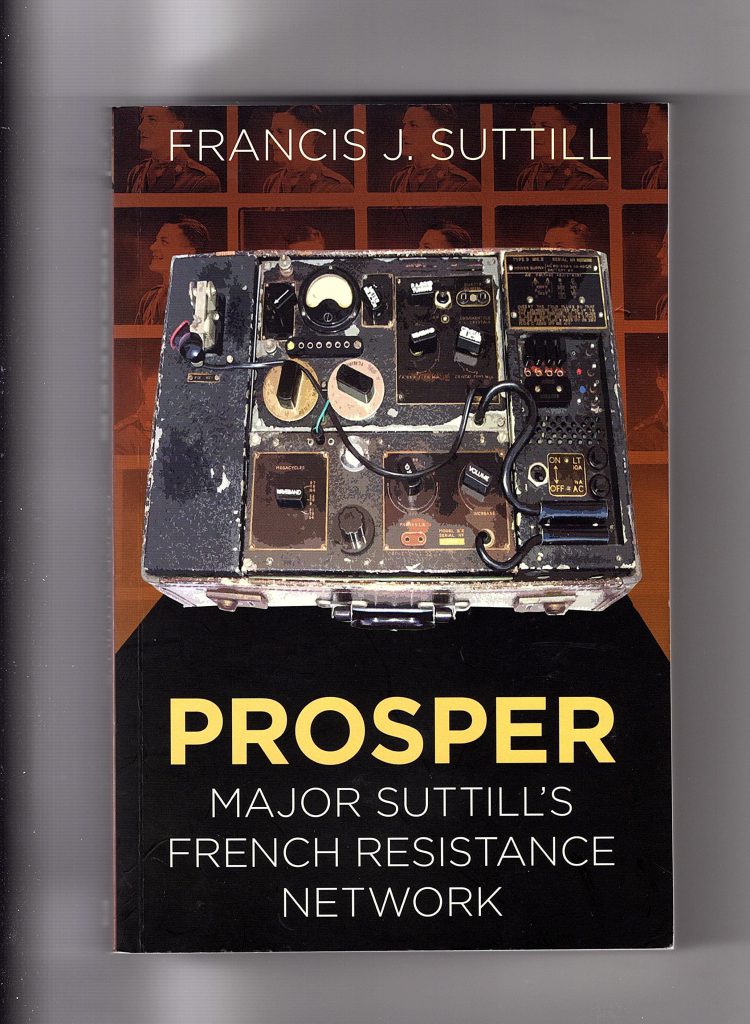
Suttill’s book was first published as Shadows in the Fog in 2014. I refer exclusively to its re-appearance in 2018 under the title given above. It is driven by the firm belief that the author’s father returned to France on May 20, and stayed there until his eventual arrest on June 24 (although it is difficult to discern the exact date from Suttill’s rather tangled narrative). A critical part of the author’s argument is that PROSPER could never have met Churchill, since the latter was out of the country during the period of PROSPER’s visit, and he thus diminishes the whole betrayal aspect of the collapse of the network, ascribing it more to carelessness and to German schemes and infiltration. He does, however, point out that F Section had not been informed of the deferment of re-entry plans to France to 1944, thus highlighting the fact that the Chiefs of Staff and SOE leaders were guilty of either gross negligence or blatant duplicity.
Where Suttill differs, therefore, in his exposition is the presentation for a series of activities for PROSPER to cover the first two weeks in June, and especially after June 10, when the moon period began. These episodes must necessarily consist of meetings and receptions that evaded the notice of the other commentators, and their provenance must therefore be inspected closely. If it turns out that Suttill discovered items in the official archives that point to PROSPER’s presence in early June, one has to ask i) how SOE overlooked such pieces, and ii) why other historians were not able to view them (the Personal Files were not released until 2003).
The following events represent PROSPER’s movements and meetings, as understood by Suttill:
A) June 2: PROSPER meets Braun in Paris (source: Jean Overton Fuller in Déricourt: the Chequered Spy)
B) June 5: Meets Edward Wilkinson in Paris. Wilkinson is arrested the next day (source: Armel Guerne’s Personal File)
C) June 11/12: Out of town at reception (source: Jack Agazarian interrogation on July 5)
D) June 12: Meets Agazarian in Paris, where he informs Agazarian of above
E) June 12/13: Attends reception for Gaston Cohen (WATCHMAKER) (sources: emended fragment of October 1943 interrogation, possibly released to Foot, and subsequently to Suttill; Boxshall’s Chronology of JUGGLER circuit; Squadron 138 records)
F) June 13: Meets Culioli, and stays night at Avaray (source: Bossard family records)
G) June 14: Returns to Paris (source: Bossard)
Source A (not actually listed in Suttill’s bibliography) was not issued until 1989, and, given that Fuller had written other books on Déricourt, it was easy to overlook. Source B, Armel Guerne’s Personal File, was not released until 2003. (It incidentally also makes the dramatically revealing statement that Suttill made two return trips to the UK, another incisive supporting item for my thesis.) Likewise, Source C (and D) – the Jack Agazarian Personal File – was not released until 2003: this is very much hearsay evidence, and PROSPER’s claim that he attended a reception cannot be verified. No Personal File for Cohen was ever released, and the fragments described above (Source E, part 1) have never been made available to the public. The original text (in French) shows that Cohen asserted that his arrival took place on June 10/11, namely before PROSPER had ‘officially’ returned to French soil, and that is echoed in a later interrogation in 1945. (I shall discuss Source E, part 3, later.) The Source for F & G clashes with other oral records in its details, but Suttill depends on this for his claim that PROSPER travelled to the Sologne because he ‘must have received’ Culioli’s post-mortem request for suspension of operations after ‘the explosions of June 10-11’.
My Letter to Suttill
At this stage, having followed up Mr Suttill’s careful observations, and checked some items with Patrick Marnham, I sent Mr Suttill (on December 30, 2022) a detailed letter, in which I challenged his version of events, and his apparent lack of methodology. (I had not read Stella King’s Jacqueline, her biography of Yvonne Rudellat, at this time, which explains why I do not cite in my message further evidence that Suttill has his dates wrong.) The text ran as follows:
Dear Mr Suttill,
I have been contemplating your account of the events of June 1943, and have come to the conclusion that I really cannot follow your line of reasoning. Your thorough researches, which constituted a stellar job in uncovering many of the activities of the PROSPER network, and in confirming your father’s movements in May, incidentally exposed the clumsy efforts of the Foreign Office to obfuscate the details of your father’s return to France. Yet you have stepped back from investigating why they bothered to do so.
I say this with utmost seriousness, as I learned while working on my doctoral thesis in Security and Intelligence Studies that a careful methodology is essential for analyzing the highly deceptive world of intelligence, espionage and subversion. At that time, and in my subsequent research activities, I developed a process for distinguishing between the Genuine (that which is evidently issued by its authorized source), the Fake (which is evidently not), the Authentic (which is an accurate account of events, irrespective of its source), and the Inauthentic (the object of which is to deceive). This broadly follows the classifications of Barzun and Graff in The Modern Researcher.
This applies both to recognized archival sources as well as to records of interviews, and to memoirs. Testimony collected may be Information (which is accurate and true), Misinformation (which may be based on ignorance, misunderstanding, hearsay, or faulty memory), or Disinformation (which is erroneous, and designed to mislead). In analyzing such testimony, one has to perform rigorous cross-checking, as well as apply the rules of chronology and geography, and try to establish a clear understanding of the subject’s role and probable motivations.
For example, in research that I have recently published on coldspur, I have shown that an officer in MI6 (probably Dick White) leaked inaccurate anecdotes (disinformation) to Chapman Pincher, reinforced by Peter Wright. Pincher subsequently published it unwarily (misinformation), following which it was picked up and accepted by more independent historians/journalists and – irresponsibly – presented as reliable facts (information).
I do not understand what you mean when you say that you ignore any evidence that requires ‘speculation’. On the one hand, you become involved in speculation yourself, for example when you write that your father ‘must have been reassured’ (p 126), and that he ‘must have heard from Culioli’ before his visit to him on June 13 (p 191). Yet you appear to discard any evidence that might challenge your core thesis (that your father returned to France on May 20, and stayed there until his arrest) on the grounds that any investigation would be ‘speculative’. This is despite the overwhelmingly strong assertions made by Foot, Cookridge, Marshall and others, echoing the careful propaganda of the Foreign Office, that he did fly in about June 12. My opinion is that such evidence has to be closely inspected to determine the reasons it exists: ‘speculation’ is an essential part of the process of creating hypotheses. If the claims can easily be disproved, they should be discarded. If not, new hypotheses have to be developed. Mark Seaman, in his Foreword to your book, writes of your ‘clear-headed, forensic manner’, but a truly forensic approach would not ignore any evidence that happened to be inconvenient.
I can identify several major conundrums in the accounts of these events:
- The overridingly significant one is the failure of F Section to be informed of the cancellation of any plan to return to France until after your father’s arrest, as you point out. This is an enormous subject, and I have written about it at length on my website. (I assume that you have read my postings, but, if not, they can be seen at https://coldspur.com/the-demise-of-prosper/ and in preceding reports.) The problem is that the Chiefs of Staff (or the SOE chiefs) were either negligent, or duplicitous, and in either case their behaviour was inexcusable, and needs to be called out officially.
- The second enigma that I detect is the dating of the flight to Neuvy that resulted in explosions, where your record differs sharply from most other testimonies.
- The third puzzle is the dating of Cohen’s (WATCHMAKER’s) arrival in France, since his two accounts differ markedly from the manner in which SOE interrogators saw it, and from the record that you outline in your book.
- The last conundrum is the integration of these two pieces, namely the conflicting claims about your father’s return to French soil, where you are adamant that his sole return was on May 20, while several other historians indicate that he returned some time between June 12 and June 14 (admittedly in the belief that that was the return of his outgoing flight from May 14). This necessarily requires a close inspection of your father’s movements between June 10 and June 14.
I believe that an attempt to develop a chronology concerning the events covered in the last three items is essential.
The Neuvy Explosions
As I understand your timeline (confirmed by you in your recent email), you have your father receiving Cohen on June 12/13, and then responding to Culioli’s plea to stop drops after the explosions at Neuvy on June 10/11, travelling by train to Mer, near Orléans, on June 13 to meet with Culioli. Your primary evidence for this is the testimony of Dr Segelle (a nephew of one of the reception team) of September 1947, declaring that some containers exploded on an arriving flight on June 10/11. You have concluded that the operation must have been [sic] PHYSICIAN 54, since the monthly summary for June in HS 8/143 lists the Neuvy operation as having undergone such an accident. Yet that reference in the monthly summary is undated: your conclusion is ‘speculation’. You correctly point out that there are contradictions in the way that the PHYSICIAN 54 operation (and the PHYSICIAN 42/60 operation) are registered in the Squadron 138 records.
Multiple witness reports, however, counter this narrative, including your own. On page 191, you state that ‘Guillaume and others’ [who?] give the date of 13 June for the drop here [i.e. Neuvy], while your only testimony comes from the nephew of one of the reception committee. Marshall offers another date – June 11/12 – and then indicates that Culioli was informed on the night of 12/13 that PROSPER was arriving by parachute on June 14. Yet other sources confirm that the explosions occurred on the night of June 12/13. In ‘Inside S.O.E.’ Cookridge offers a vivid description of the events, derived from persons assembled there on that very night. Patrick Marnham has informed me that in the Musée de Resistance in Blois there is a wall-chart recording RAF parachute drops in the area between 1941 and 1943, including the legend that ‘two containers exploded at Neuvy’ on June 12. (That could, admittedly, be the night of June 11/12 or that of June 12/13. I notice that, on page 163 of your book, you record your visit to this museum, but declare that you found there ‘less evidence to support the dates that I already possessed’.) Furthermore, in ‘War in the Shadows’, Marnham names several of the twelve members of the reception committee, including Culioli and Rudellat. That testimony is based on information from the Archives départmentales de Loir-et-Cher, Blois (AD55J3).
I notice that you refer to Paul Guillaume’s book several times in your account, yet you fail to reflect his contribution properly. Guillaume cites four independent accounts – three of them from resistance veterans – for the date of June 12/13, including the Dr Segelle whom you mention. The title of the reference is ‘Dr Segelle’s response concerning the parachute drop of 13 June’. Dr Segelle was not actually present to witness the explosions, but those who informed him were indeed there, and appear to be unanimous about the date.
Returning to the AIR records, I find they are confusing. In your Appendix you describe PHYSICIAN 54 as completing successfully, but then identify it as the Neuvy operation, where containers exploded. You choose to cite the Monthly Summaries in HS 8/143 as your source, but the brief mention of PHYSICIAN 54 as one of the two examples where ‘Containers blew up’ looks as if it is a late addendum. Furthermore, the details indicate that PHYSICIAN 54 was a successful operation. This judgment is confirmed by AIR20/8252 (Daily Summary of Special Operations for 138 Squadron) and AIR20/8459 (138 Squadron Diary). The former tells us that PHYSICIAN 54 was a success, dropping five containers, while its companion mission ROACH 47/48 (a RF endeavour) had to jettison ten containers because of engine failure. The latter source confirms that information, with no indication of problems with the PHYSICIAN 54 operation. Even if the author of the diary at the time had not been aware of the explosions, the monthly summary informs us that nothing was amiss – no explosions recorded.
It is surprising that the two operations highlighted as having containers exploding (SCIENTIST 35 & PHYSICIAN 54) are both recorded as being successful in this monthly summary. Neither is listed in Appendix C (unsuccessful operations) of HS 8/143. Moreover, neither AIR20/8459 nor AIR20/8252 lists any operation on June 12/13 (or June 13/14) that might correspond to the Neuvy incident. In both archives, the only PHYSICIAN sortie for June 12/13 is the PHYSICIAN 42/60 (WATCHMAKER) operation. The records for the sister Squadron 161 are missing substantial sections, and we have to rely largely on pilots’ reports at AIR 20/8498. You list from those PHYSICIAN 32 on June 11/12 – recorded as ‘missing’, and CHESTNUT 5 on June 12/13, but the latter’s co-ordinates indicate that it performed a drop near Chartres, not at Neuvy. Likewise, AIR 20/8461, Squadron 161’s Operational Reports, does not list any other operation that can reliably traced to the Neuvy incidents. Records from both squadrons are included in the monthly summary at HS 8/143.
Thus, despite the strong evidence that the incident of the exploding containers was witnessed by several local observers, in SOE and AIR archives there is no dated confirmation of the episode, and no recognition of it, outside the vague June Summary Report. Patrick Marnham has suggested that PHYSICIAN 42 carried on after dropping WATCHMAKER, and its dropping zone could well have been Neuvy. The crew may not have reported exploding containers, and reported the operation as ‘successful’, as they would have been several miles away before the containers hit the ground. This theory, however, would confirm the dating of WATCHMAKER’s arrival in contradiction of what Cohen himself said.
The arrival of WATCHMAKER
Thus the arrival by parachute of Gaston Cohen (WATCHMAKER) is likewise beset with controversy. You record this as occurring on June 12/13, as part of the combined PHYSICIAN 42/60 operation, and indeed ‘WATCHMAKER’ has been inserted into the operational details maintained by Squadron 138. Yet you point out a bizarre phenomenon: Cohen reported that the bomb door jammed after he jumped, thus preventing the release of the PHYSICIAN 60 containers. (Elsewhere, you have written to me that the containers would have been released before the passenger jumped, so I do not know how you explain this contradiction.) The record at AIR 20/8252 states, however, that the PHYSICIAN 60 segment of the operation released only one passenger and one packet: no containers were destined for this drop, and PHYSICIAN 42 successfully dropped five containers and two packages at its intended destination. AIR 20/8459 confirms that the total operation dropped one passenger, five containers and two packages, and was judged ‘successful’. So where does Cohen’s testimony come in?
I find it extraordinary that M. R. D. Foot has very little to say about Cohen’s arrival. His commentary is limited to recording that he arrived ‘ten days before the troubles, to a PROSPER reception’. I can imagine that the authorized historian was so confused by the material shown to him by Boxshall that he steered clear of it. Cookridge, who had been told that PROSPER returned from London on June 12/13, states that Suttill was still in the UK when Cohen was parachuted in, thus showing that he (Cookridge) was unaware of Cohen’s testimony about his expansive reception committee, but thereby reinforced the accuracy of the earlier date.
For, as we know, Cohen asserted, under interrogation, that he arrived on the night of June 10/11. In the first statement, transcribed first in French from his interview of October 11, 1943, he is quite clear that he arrived on June 11, was received by PROSPER, ARCHAMBAUD and DENISE, and was taken to a safe house where he had to wait for four days before DENISE took him to Paris. This record has been emended by an SOE office to show that he arrived on June 13, and the translated version reflects this ‘correction’, not using Cohen’s original words. Here Cohen also talks about the containers that should have been dropped at the same time becoming jammed in the aeroplane. Yet there were no containers directed at this location – solely Cohen’s personal package. Why would Cohen invent such a story?
Remarkably, Cohen was interrogated a second time, a year later, and you provide a reference to the file at HS 6/568. (The file, unusually, does not have a release date in the National Archives Directory.) The interrogation took place on December 8, 1944. His arrival is presented as follows:
“Informant jumped on the night of June 10th 1943 to a Reception Committee, organised by PROSPER, near VERSAILLES, and it was successful, Informant dropping about a yard from the first light.” (I notice that you cite some of these words in your account, although you do not acknowledge the details of the date given.) It goes on to report that Cohen was received by PROSPER and ARCHAMBAUD (DENISE is not mentioned), both of whom he knew personally, and was then taken to a safe house, where he stayed for four days before DENISE picked him up and took him to Paris. There is no mention of obstructed containers, or doors jamming: the operation is presented as being completely successful. Moreover, no one sees fit to correct the dates that Cohen has presented. Was that ‘correction’ no longer considered necessary, had the authorities recognized that the date Cohen gave was in fact correct, or had they simply grown careless after the course of time?
I notice that the SOE editor of Cohen’s interrogation, while changing the date of his landing, did not alter the interval between Cohen’s arrival at the safe-house and his being picked up by DENISE and taken to Paris. The safe-house was in Versailles, just outside Paris. DENISE was present at the reception. What, we have to ask, was she doing in the intervening three days?
We need to consider the possibility that the Foreign Office, and the SOE Advisor, in their efforts to maintain the fiction of PROSPER’s presence in the UK until June 12, for Foot’s benefit, tried to conceal any reference to PROSPER in operations that occurred at the beginning of the June moon period, or any activities involving him in France between May 20 and June 12. This, I believe, has enormous implications for the stories of Wilkinson and Cohen, at least.
Thus another pivotal incident in the events of mid-June is covered in confusion, with the testimony of participants clashing with the official record, while the record itself does not reflect the realities of the operation as it took place above and on French soil. And, if Cohen was not telling the truth, why was he dissimulating?
The Implications for PROSPER
Resolving these contradictions is a difficult task, but it appears that the leadership of SOE was exceedingly embarrassed by the events of June 10-14. They withheld much of the evidence: they inserted other false items into the archive. Even some of the operational records at Tempsford seem to have been purged or emended. The Foreign Office channeled some very dubious records to Foot. The Chronology supplied by Boxshall for the PROSPER circuit specifically declared that, for the period June 12-21: ‘No details as to recipients, dropping-grounds or contents of containers available’. The testimony submitted by Pierre Culioli was cut back to avoid the events before June 16, and also to ensure that no mention of PROSPER before June 12 appeared in his statement. (I point out, however, that, in Culioli’s report, he claims that, in May 1943 ‘quand Prosper est revenu de Londres’, i.e. on his return, not before his departure, PROSPER promised him that he, Culioli, would have control of his own circuit. Such minutiae were obviously correct, but would immediately have undermined the story had Foot had access to them.) The interrogation report in Guerne’s Personal File very clearly explains that Wilkinson, PROSPER and ARCHAMBAUD met with him on June 5, the day before Wilkinson’s arrest. Agazarian reports rather blandly (and ambiguously) that he saw PROSPER on the afternoon of June 12, and assumed that he had just arrived from the countryside since he had just returned from a reception. Cohen may have been encouraged to distort his experiences.
The apparent transposition of the events involving the arrival of Cohen and the incident at Neuvy is probably key to the whole deception. When the authorities came across the facts about Cohen’s arrival, they concluded that that information would be a major obstacle in their project to set your father’s sole return as occurring on June 12. So they set about changing the facts. The deferring of Cohen’s reception by PROSPER and his team gave an alibi for their presence at Versailles at a later date, and tried to draw attention away from an unlikely grouping on June 11. It avoided focusing analysis on an ‘impossible’ presence of PROSPER before his ‘official’ return to France. The bringing forward of the weird Neuvy explosions, so oddly not reflected in any detailed operational report, might have been designed to give cause for PROSPER to respond to Culioli’s call for intervention, however difficult it is to imagine the message getting to him that easily. It may simply have been a necessary corollary to changing the date of Cohen’s arrival. (Cookridge has him arriving that same night.)
As you know, I regard your account of PROSPER’s movements between June 10 and 14 as unlikely – very demanding, and largely uncorroborated. I cannot discard the multiple accounts that have your father returning from England during this time, and suspect that SOE and the Foreign Office tried to muddy the waters in order to conceal what would have been a very embarrassing revelation for them. (For instance, Agazarian’s claim that PROSPER was at a reception on June 11/12 is the first official negation of the story of PROSPER’s movements as ‘revealed’ to Foot.) The crux of the issue is that the authorities had at first to withhold any evidence that PROSPER was in France before June 12, in order to maintain the fiction for Foot, but then had to create evidence that he was busy around Paris at the time of his short return after June 10. Yet their strong emphasis on a June 12 return date, as forced upon Foot, and defended for so long, proves that they were aware that your father did indeed make a return flight at that time. These two strategies clashed, the Foreign Office could not purge all the relevant archival material that was released over the years, and could not control what was published overseas.
The irony is that the Foreign Office, initially aware that PROSPER’s return occurred on June 12, and that it was ‘common knowledge’, managed to maintain that fiction for sixty years, forty of them during the period of the authorized history’s first life. They achieved that since archival evidence for PROSPER’s second flight was even more elusive than what you retrieved about his May itinerary. Amazingly, when your book appeared, there had been no discovery of the scattered evidence of your father’s presence in France in early June, and no one until now has bothered to question why the authorities would so determinedly have abetted the alternative narrative. Thus the SOE ‘historian’ has grabbed on to your story with great relief and enthusiasm.
Mark Seaman asserts that your book ‘will surely be the definitive account of Francis Suttill and the tragic story of his PROSPER circuit’. That is a foolish and premature judgment, in my opinion. The contradictions that I have highlighted here demonstrate incontrovertibly that a fuller and more accurate story remains to be told. It may sadly not be enabled by the release of any fresh archival material: after all, for sixty years, the SOE/Foreign Office promoted and supported the notion that your father returned to France on June 12 without offering any documentary evidence, so it is unlikely that any details of his second pick-up will appear. The historians among us must continue nevertheless to refine our hypotheses.
Lastly, a few miscellaneous observations:
- CHESTNUT 4 drop zone: you wrote that you did not list your father’s arrival here, because it ‘went to a completely different DZ’. I assume you implied that it was the BRICKLAYER Operation (part of the same flight) that technically carried the two ‘men’ involved, your father and Antelme (neither identified), while the CHESTNUT 4 segment dropped off containers elsewhere.
- Your claims under PHYSICIAN 42, and what Cohen wrote about the containers jamming after he jumped, are in contradiction with your earlier reply to me that ‘containers were released first to avoid a wayward container hitting an agent’.
- The correct text of the BBC message for Neuvy is ‘Le chien eternue sur les draps’ (from HS 8/444)
- Was the nephew of Dr Segelle a doctor, too? I am surprised that you rely on hm so much as a ‘witness’.
- The testimony from Alain Bossard is at variance with that given to Cookridge, who wrote that PROSPER dined with Culioli’s brother-in-law, Guy Dutems, and was then driven to Amboise to catch a train to Orléans. (I note that you record both Dutems brothers as having been killed by the Germans.)
- Guillaume (p.70) explicitly queries the reliability of Ben Bossard as a witness. He describes Bossard sarcastically as a person ‘with a fertile imagination… who gave a fictional account of the arrest of Culioli on 21 June in a letter he sent to La Republique du Centre that was published on 8 September 1947 under the heading ‘a titre documentaire’.
- The Bossard entries in the Index need to be corrected, as most of them refer to Ben (the father).
- Stalin did not attended CASABLANCA (p 273).
Sincerely,
Tony.
I did not expect to convince Mr. Suttill of my argument, but I felt that it was important to give him a chance to comment on my objections, and fresh hypotheses. When he replied, a week later, he did not engage in any debate, merely suggesting that I had not interpreted the squadron records correctly, and stuck to his guns, being unpersuaded by any of my arguments. I responded my pointing out in detail how contradictory and unreliable the surviving air records are.
The Relevant Documents
I now turn to examining some important documents that have been cited as evidence (or completely ignored!), in order to highlight the contradictions and paradoxes inherent in these early June movements.
i) Boxshall’s Chronology
M. R. D. Foot was very reliant on a document prepared for him in 1960 by Colonel Edwin Boxshall, the first ‘SOE Advisor’ in the Foreign Office, titled Chronology of SOE Operations with the Resistance in France During World War II. A copy is held at the Imperial War Museum (see https://www.iwm.org.uk/collections/item/object/1030015651 ): the Catalogue indicates that the papers were filed between 2005 and 2007, i.e. not until after the revised edition of Foot’s History had been published. (An Introduction titled ‘Technical Corrections’, by Thomas L. Ensminger, is dated November 2006.) The document claims to provide a comprehensive history for Foot to work on, but, through its omissions, betrays the fact that the first two weeks of June were an uncomfortable period for SOE to accept or discuss.
The screed is broken down by ‘network’ (‘réseau’), and the evolution of the PROSPER network, initiated in October 1942 to replace the broken CARTE circuit, is explained. The chronology is somewhat sparse: Major Suttill is listed as returning to London for consultations on May 14/15, and the next entry indicates that he returned to France on May 20. A hand-written question-mark appears against this statement: presumably Foot, having learned from informal (but reliable) sources that Suttill did not return until June 12, thought that Boxshall had made an error. He passed it by. Yet the evidence (which Suttill’s son would pursue fifty years later) is clear.
Boxshall then lays out the organization of the PHYSICIANPROSPER network, with the leaders of its sub-circuits identified, including Pierre Culioli of ADOLPHE, described as covering the Indre et Loire area, out of Mer. Yet, for this critical period a large gap exists. A laconic note states that, for the period June 12-21, “No details as to recipients, dropping-grounds or containers available.” This is an obvious prevarication, since subsequently revealed archives have shown that the beginning of the June 1943 moon period was a very active – though controversial – stage of PROSPER’s story. William McKenzie’s internal history of SOE (written in 1947, but not published until 2002) runs (on pp 574-575) as follows: “Up to June 1943 the whole Suttill circuit had received 254 containers of stores, and in ten days in June it beat all records by receiving 190 more containers.” Why such coyness from Boxshall? And why did Foot, who had access to Mackenzie’s text, although he was not allowed to interview him, not challenge this evasion by the SOE Advisor?
Boxshall’s account specifically ignores the fact that the moon period actually started on June 10/11, and, in his account of the PROSPER circuit elides over the dropping-off of Cohen (WATCHMAKER – whether it occurred on June 10/11, as Cohen claimed, or a few days later, as SOE management preferred). While he describes Cohen’s arrival under his section on the JUGGLER circuit, he avoids any mention of Suttill’s return on June 12, the misadventure with the exploding containers at Neuvy, and several other operations that the AIR records have revealed. His Chronology then moves to list the parachuting in of Pickersgill and McAlister, received by Culioli, on June 15/16, and the Lysander landing on June 16/17, from which Noor Inayat Khan deplaned, and which Jack Agazarian and his wife boarded. It then picks up the story with the arrest of Culioli, Rudellat, Pickersgill and McAlister on June 21.
ii) The Interrogations of Gaston Cohen
Two interrogations of Gaston Cohen (WATCHMAKER) are known to have taken place. His arrival in mid-June is significant since he was received by a large group including PROSPER, ARCHAMBAUD (Gilbert Norman) and DENISE (Andrée Borrel) – at least the presence of the latter trio does not seem to be disputed by anybody, and it thus gives confirmation of PROSPER’s presence in the region. The date of his parachuting in is, however, more controversial.
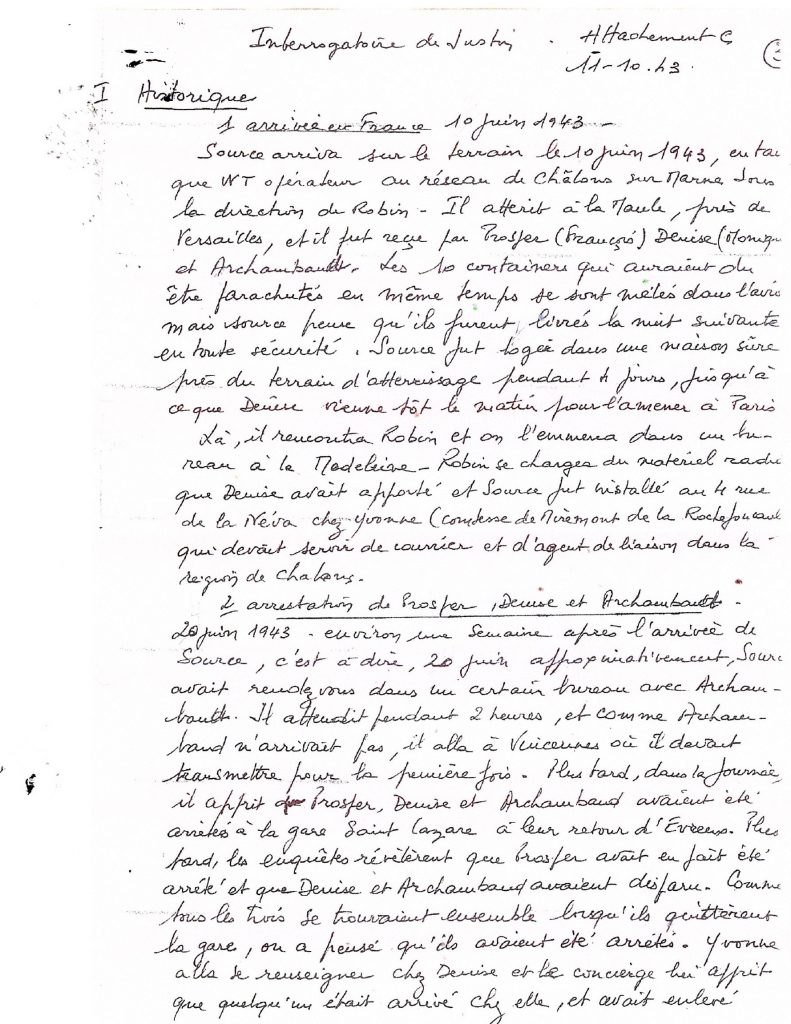
The first interrogation of Cohen took place on October 11, 1943 – in French. The transcription (see Figure) is fascinating since Cohen confidently provides the details of his arrival and reception near Versailles. He arrived on June 10 (presumably shortly before midnight), was met by PROSPER, ARCHAMBAUD and DENISE, and then taken to a safe house where he had to stay for four days until DENISE picked him up to take him to Paris. He adds that ten containers that were supposed to be dropped at the same time jammed in the plane, and his interrogator observes that Cohen believed that they had been safely dropped the following night.
Yet the handwritten ‘corrections’ can be clearly seen on the document, emending the date of his arrival to June 13 – and, rather mysteriously, pushing back the date that Cohen gave for the arrest of PROSPER, from June 20 to June 24 (the latter being the correct date). Whether this was a mechanical process by the editor, or whether it just happened that Cohen was vague about the latter event, is not clear. One would expect him, so soon after his parachutage, to be able to recall the day of the week, and hence the date, of his arrival in France both easily and accurately.
The emendations become more formal in the English translation, since the date originally supplied by Cohen is not visible. June 13 appears to be now inscribed officially as the date of his arrival – although whether his parachuting in occurred late at night that day, or in the early morning, is not clear. And the story about the jammed containers endures, even though the records at AIR 20/8252 record that no containers were being dropped for that segment of the journey. Furthermore, there is no evidence that the operation was re-tried the following night. Suttill himself claims that the PHYSICIAN 60 operation was re-attempted on June 16/17.
The mystery is made murkier by the evidence from Cohen’s second interrogation, on December 8, 1944, available at HS 6/568, and I refer readers to my letter to Suttill for details. Cohen reiterates his narrative about arriving on June 10, and at this stage his account is not challenged. The operation was successful: Cohen landed about a yard from the first light, a quite remarkable achievement, especially considering that this was his first live parachute drop. On this occasion, Cohen also made no mention of jammed containers. Why would he continue to claim that the date was accurate? Had he not been informed of the ‘correction’ that had to be made the previous year? At the end of this report (i.e. not from Cohen’s own words), the author, very oddly, comments: “The only Reception Committee about which Informant has no information [sic], is the one to which he jumped. At this there was a minimum of twelve men, including PROSPER, ARCHAMBAUD and DENISE. Arrangements had been made for the transport of material which was supposed to be dropped with Informant, namely that it was to have been taken to the farm, near the ground, that night, and collected the following day by a lorry and taken to Paris, in fact, the material never left the plane. On that occasion he came two or three days later.” This is a very enigmatic observation, but is perhaps an elliptical re-statement of the ‘jamming’ problem, and could explain why a large reception party needed to be at hand – at least in the narrative outlined by the interrogator.
The assertion that Cohen arrived later is made in Boxshall’s Chronology under his coverage of the JUGGLER circuit, since the latter, under Jean Worms, was WATCHMAKER’s destination. Boxshall’s text runs as follows: “June 12: Parachute – 1st mission. Lieut. Gaston Armand COHEN (Justin) was dropped to act as W/T operator to this CHALONS-sur-MARNE Circuit. He landed at La MAULE, near Verseilles [sic] and was met by Major Suttill, Major Norman and Miss Borrell.” (There is, significantly, no mention of the extended reception party.) “The ten containers which were to be dropped simultaneously jammed in the bomb-bays, but were delivered the following night.” Boxshall follows up by indicating that Borrel (DENISE) took Cohen to Paris on June 16.
Of course the very selective and cautious disclosure of the first two documents is very shady. No Personal File on Cohen has been released, and yet these pieces are clearly marked as ‘Appendices’. And did Foot even see them? One claim that Foot made (in his very sketchy account of Cohen’s arrival) is that it was Cohen who told the authorities that Suttill brought with him ‘an alert signal’ for the expectant secret armies, and Foot names the source for this as the interrogation described here. Yet the fragments extant contain no such affirmation, a conundrum that again raises questions about Foot’s methods. One might postulate that he either: i) had access to other Cohen-related documents that have not seen the light of day; or ii) was told about that important signal by someone who ascribed it to the Cohen interrogation, and solemnly repeated what he was told; or iii) never actually saw the Cohen fragments, and simply guessed that the intelligence was revealed there; or iv) got his notes confused, or was told by his source that he could not reveal where he derived the insight, and thus bluffed his way through.
But why would Cohen be established as the source of that very controversial ‘Alert’ signal? If it had been official, why would it have not been recognized and confirmed by someone like Buckmaster? Yet admitting to the fact that the guerrilla armies were being prepared for imminent action would have been a disastrous admission of political irresponsibility. One thus has to conclude what an unreliable datum this message is, for the following reasons:
i) No document has been shown to confirm the event;
ii) Foot used it indiscriminately to support two conflicting theories separated by almost forty years; that PROSPER returned on May 20, and that he parachuted back in on June 12;
iii) Cohen’s surviving testimony is in any case notoriously flawed, as if words had been fed to him;
iv) It would be very unlikely that Cohen alone would be the carrier of that message, if indeed PROSPER had brought it back with him;
v) Any authorized history of SOE in France would want to minimize any suggestion that PROSPER had been charged with energizing secret armies for an imminent revolt in support of an invasion.
It therefore seems more likely that Foot was fed this allegation by a disgruntled SOE officer or employee who wanted the truth to be told, and that, when Foot’s text was submitted, the implications of this vital observation were overlooked.
On the other hand, senior SOE officers may not have known about a secret instruction from Churchill to Suttill, something that Cohen may indeed have learned when he interacted with PROSPER after his arrival, and the hidden account of his interrogation confirmed that an ‘Alert’ signal had indeed been communicated to the networks. Finally, it astonishes me that no one thought to try to interview Cohen (who changed his name to Collin, and lived until 2007) to ascertain whether he was willing to explain what really happened in 1943.
iii) The Evidence of Pierre Culioli
The third significant document is the report made by Pierre Culioli (ADOLPHE), the leader of the eponymous sub-network in the Sologne, under PROSPER. After Culioli, who had been arrested on June 21, 1943, had escaped while being transported from one prison camp in Germany to another, he came to the attention of SOE. A memorandum in his file, dated 21 April, 1945, informs F Division of SOE that Culioli has just been picked up in Frankfurt, and notes that ‘in our view Adolf [sic] Culioli is a most important witness in the PROSPER case’, and that he should therefore be brought to Paris for interrogation.
Culioli had a controversial career with SOE, one that is bedevilled by minor contradictions. Having been recruited by Raymond Flower, he came under suspicion as a traitor, to the extent that Flower requested that a poison pill be delivered to kill him, and it was Gilbert Norman who actually carried the pill with him into France. When he found out about this, Culioli and his partner Yvonne Rudellat, agent JACQUELINE, were naturally furious. Flower was recalled, and Culioli set up his network in the Sologne. He knew PROSPER well, having received him when Suttill was first parachuted in in October 1942, but doubts about Culioli’s commitment to the cause, and beliefs about his desire for power, continued to hang around in Baker Street. Francis Suttill has asserted that Culioli’s statements about the autonomy of his so-called ADOLPHE circuit were simply pretentious, but Suttill gave a positive assessment of Culioli’s contribution when he was in London in May.
My discussions earlier of Culioli’s unreliability as a witness show how impossible it is to determine an accurate account of what happened after the Neuvy incident. And yet historians and biographers continue to harvest indiscriminately from these faulty memories and deliberately distorted reconstructions. Francis Suttill, for instance, casually observes that many chronicles record a date different from the one he selected for Neuvy: he has clearly read ‘Jacqueline’, since he cites it in his narrative. The story there, however, is very specific about the timing of the launch of the operation, and the return on Whit Monday. Nevertheless, Suttill prefers to rely on the testimony of a young man who was not present indicating that the events took place on the Thursday before Pentecost. One way to interpret the advancement of the date of the Neuvy explosions a few days to June 11 is that, in the light of PROSPER’s documented return on June 12, the arrival of substantial explosives could not be attributed to any new incendiary campaign arranged by PROSPER during his absence, an attempt, perhaps, to negate the point that Cookridge made – that the Neuvy operation was the first in the ‘stepping-up’ campaign. Yet it is all very clumsy.
Thus the curious researcher might well be encouraged to think that an official report from Culioli, who, while many of his colleagues had been murdered or had died in German prisons (including his partner Rudellat in Belsen), had managed a miraculous escape, would be able to shine some much-needed light on the affair PROSPER, as the SOE chiefs hoped. Yet gross disappointment ensues. In the report that resides in his Personal File, Culioli writes of no events that occurred between a meeting with Suttill after the latter’s arrival from London in May (that second vital datum that confirms PROSPER’s first return) and the dropping-off of Pickersgill and McAlister on June 16/17. There is not even a redacted section that might have described the critical events of June 10 to June 15. Culioli must have been instructed to keep his mouth shut.
One strange insight has leaked into Suttill’s story, the account so enthusiastically adopted and promoted by Mark Seaman as ‘the last word’ on the downfall of PROSPER. On pages 191-192 of his book, Suttill writes that, at the meeting he had with Culioli on (probably) June 13, PROSPER ‘refused Culioli’s request [to suspend drops] as he had already told him that he did not want to waste time, feeling that the invasion was imminent, and he was so serious about this that he gave Culioli the order to continue with receptions in writing’. Suttill offers Culioli’s report at HS 9/379-8 as the source of this claim, the very same described here. But no such statement appears in the report: Suttill agrees with me on this, and can now not recall whence he gained this rumour. Thus we have the strange phenomenon of both Foot and Suttill echoing a story that undermines their chief argument (that PROSPER was not betrayed by British duplicity), while neither of them can offer a verifiable source for the allegation. It would have been highly irresponsible, in any case, to commit any orders in writing, as the evidence would have been incriminating, if found, and useless, if destroyed.
The Flit
Since the events of June 10-15 are clouded in almost impenetrable confusion, it is impossible to determine exactly when and how PROSPER made his express return to the United Kingdom. No flight records indicate a plausible pick-up and drop-off, whether by parachute or landing. Yet perhaps the regular rules of historical verifiability do not apply here: after all, for forty years the fact of PROSPER’s arrival on June 12 was recognized via the authorized history as being correct, when neither archival evidence, nor any witness statement, was presented. Affirming the accuracy of that event, while making a corollary assertion that he had not been out of the country since May 14, is hardly revolutionary, and coexists well with the other known details of PROSPER’s activities.
The records of Squadrons 138 and 161 are frustratingly opaque and inconsistent – and many of the vital registers for this period have not been made available, maybe lost, maybe destroyed, maybe simply withheld. If PROSPER was picked up by a Lysander, and made a return by parachute or landing, it is entirely probable that the relevant records were kept secret. Yet the much-quoted date of a June 12 return falls between some conflicting accounts of a noted arrival – that of Gaston Cohen.
Consider the following features of the notorious PHYSICIAN 60 operation that was combined with WATCHMAKER:
i) On two occasions, under interrogation, Cohen claimed that he was dropped on June 10/11.
ii) On the first of these interrogations, the transcript was emended to read June 13/14.
iii) The official Air Ministry reports indicate that WATCHMAKER completed on June 14.
iv) In his first interrogation, Cohen indicated that ten containers had become jammed, and failed to drop. (It is uncertain how he knew this: in his book, Suttill says he would have dropped before any containers; in a private email to me, he wrote that he would have dropped after them; Boxshall in his notes writes that the drops were simultaneous.)
v) Cohen also claimed that the shipments were successfully made the next night. It is not clear how he knew this. The records do not reveal a follow-up the next day/night.
vi) In his second interrogation, Cohen fails to mention the jamming episode.
vii) The Air Ministry reports do not indicate that any containers were dropped, nor do they record that the operation was a failure.
viii) The transcript of Cohen’s interrogation has never been officially released, and is listed as an Appendix to an unknown and unavailable report.
ix) Cohen’s Personal File has never been released.
x) Ernest Boxshall, the SOE Advisor, in the Chronology he provided for M. R. D. Foot, guided him to Cohen’s testimony rather than any other official source.
xi) Cohen, on his very first parachute drop, was reported to have landed a yard from his target.
xii) Cohen listed only three members of a reception squad, but by other accounts was reputedly met by a reception team of twelve, including Balachovsky. That would appear to be an unnecessarily large contingent to welcome a new wireless-operator, but would be required if a large set of containers were due to arrive at the same time.
xiii) Cohen was taken to a safe-house, where he had to stay for three or four days before Borrel was free to take him to Paris.
xiv) M. R. D. Foot studiously ignored the details of Cohen’s arrival.
Now even the most cautious investigator might question the authenticity of this assembly of contradictory factoids, and struggle to determine exactly what happened. One might conclude that Cohen had been trained to develop a story-line that bolstered the particulars of his arrival, but by adding improbable details in the cause of imagined verisimilitude, actually undermined the whole charade. The overwhelming conclusion for me out of all this is that the Foreign Office had to maintain and support a narrative that placed the undeniable presence of PROSPER at Cohen’s reception after his established arrival on June 12, that date having been precisely chronicled by the authorized historian. If the records showed that the events occurred on June 10/11, highly embarrassing questions would be asked. I thus posit a very tentative hypothesis: that Cohen arrived on June 10/11, landing by Lysander rather than being parachuted in, and that Suttill was picked up by the same airplane. It is possible that Norman and Borrel accompanied Suttill, which would explain why Borrel was not able to shepherd Cohen to Paris until she returned a day or two later.
Another scenario comes to mind: that the special flight of His Majesty King George VI was used instead. The commander of Tempsford station was Group Captain E.H. Fielden, known as ‘Mouse’. As Hugh Verity (author of We Landed by Moonlight) wrote: “He had been the Prince of Wales’ personal pilot and the Captain of the King’s Flight, and had formed 161 Squadron”. A single Hudson aircraft was maintained in operational readiness at Tempsford in the event that King George VI had to be evacuated in an emergency. Since that possibility diminished after 1941, the plane was actually deployed for other purposes – ‘vaguely unauthorized flights’, in the words of Stella King. These included the rescue of important Polish and French generals. Winston Churchill was recorded as making special requests through SIS, and, when he asked for a flight to be arranged to bring back General Georges and his party from the Massif Central in May 1942, the Group Captain himself took the controls. Fielden also piloted the Hudson on which Yvonne Rudellat flew to Gibraltar on her way to being put to shore by felucca in southern France in the summer of 1942.
Thus it would not seem a surprise if Churchill had made a similar request, when he returned from his travels abroad in early June, and learned of PROSPER’s recent visit, that he be brought over for further ‘consultations’, and that the royal Hudson was again seconded for duty. Patrick Marnham has studied the Prime Minister’s movements after he flew in from Gibraltar on June 5, based on Volume VII of Martin Gilbert’s biography of Churchill. Churchill left London for Chequers in Buckinghamshire, north-west of London, on Friday June 11, but spent part of the weekend at Chartwell, his private house in Kent, before returning to London on June 14. Chartwell would have been more convenient for RAF Tangmere in West Sussex (which was also used by the Tempsford squadrons), and thus his presence there could have coincided with PROSPER’s arrival on June 11, and with his departure the following day, the date that has been cited by so many as that of his return to France.
Francis Suttill’s Article
As I was working on this piece in early January, I happened to notice that the Journal of Intelligence and National Security had published on-line, on December 27, 2022, an article by Mr. Suttill. It was titled ‘Was the Prosper French resistance circuit betrayed by the British in 1943?’. My interest was immediately piqued. Now, I am not a subscriber to the Journal: as I have explained before, the Taylor and Francis organization makes it punitively expensive for the private historian or researcher to acquire its publications, or individual articles. Had Mr. Suttill been reading my research, perhaps, and changed his opinions? Regrettably, no. The abstract made it quite clear that he did not believe that British Intelligence had been responsible for the demise of his father’s network – at least not via ‘betrayal’, though perhaps incompetence had been a factor. Yet the author suggested that ‘newly released information’ had consolidated his judgment of their innocence. I accordingly wrote to Mr. Suttilll, asking him for one of the free access rights that he is entitled to distribute, and saying that I was keen to read what fresh arguments he was offering.
After a couple of days I heard back from Mr. Suttill, and he indeed granted me access. But it was only via the SOE forum that I learned soon after that he had not been aware that his article had been posted on-line! I was in fact the bearer of the news. In advertising its publication to the group, he explained that the Journal had agreed to publish his article in the June 2023 issue, to coincide with the eightieth anniversary of the events, and introduced his comments by writing that his article shows ‘that not only did no one in Britain orchestrate it [the arrest of his father] but they could not have done so even if they had wished to’. That seemed to me a rather tortuous and misguided line to take.
I shall make no further comments here, except to say that Mr Suttill’s argument contains no new information, and he continues to miss the point. Patrick Marnham and I have prepared a riposte that will be sent to the Editor very soon after the day on which this report is being posted, and I shall defer publishing the letter on coldspur lest the Editor want to use it in the Journal.
Conclusions
This is not an open-and-shut case, and much of the evidence is circumstantial. Yet the current record of events, represented by the authorized history and a number of independent studies, is so paradoxical, implausible and contradictory that it cannot be allowed to stand as a statement of fact, no matter what the unqualified and irresponsible SOE ‘historian’ claims. I submit this text as an initiative to try to advance the debate, in the perhaps vain hope that the Foreign Office will see the hopelessness of its current pretence, and discover and release some further files (such as the Gaston Cohen collection) that will allow a more accurate story to be told. If this could occur before June 2023, it would allow, by the time of the octogennial remembrance of the events, a more honest appraisal of the activities that led so many courageous men and women to lose their lives.
(This month’s Commonplace entries can be found here.)


